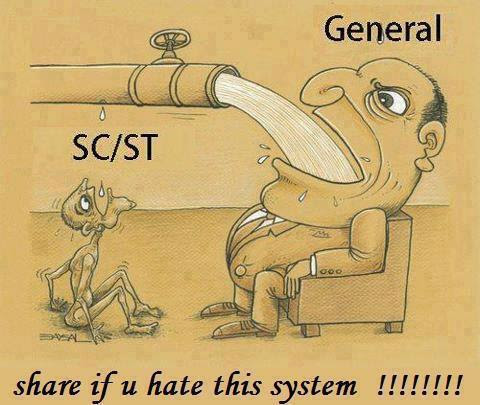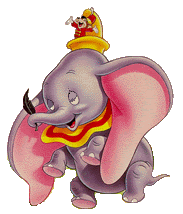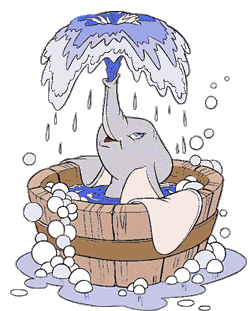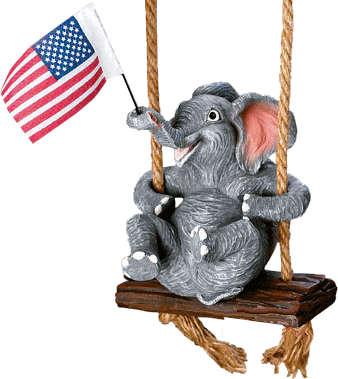The
‘Sarvajan Hitay Sarvajan Sukhay’ rally on 4th September in Allahabad was
“historic” and “there was more people than 1 million at any previous rally in
Azamgarh”.
http://www.dailypioneer.com/
Rally was organised at Parade Ground
The‘Sarvajan Hitay, Sarvajan Sukhay’ rally was organised at Parade
Ground near Sangam where Murderer of democratic institutions( Modi )
had addressed a
rally in June last to consolidate SC/STs and to reach out to non-SC/ST
groups such as Muslims and upper castes ahead of the assembly polls in
the State next year, the Bahujan Samaj Party (BSP) president Mayawati
addressed another mega rally in Allahabad at the parade ground on
Sunday. Earlier she held similar ralliers in Agra and later in Azamgarh.
The BSP got the crowd for its rally from the neighbouring districts of Fatehpur, Kaushambi and Pratapgarh
Mayawati was accompanied by top party leaders including Satish
Chandra Mishra in the meet organised to establish contact with its
core vote banks of Maurya, Shakya, Saini and Kushwaha. The rally is
also mobilised Maurya voters . Maurya belonged to neighbouring Pratapgarh district.
Around 10 lakh party workers
from four districts, including Allahabad, Varanasi, Kaushambi and
Pratapgarh of Allahabad division, attended the meeting. Recent attacks on SC/STs across the country
dominated the issues that Mayawati addressed in the rally.
The Allahabad rally was the third one after Agra rally held on
August 21 and at Azamgarh on August 28. The next rally after Allahabad
would be held at Saharanpur on September 11. BSP has picked the Cosmos
Green Field on the outskirts of Saharanpur as the venue for its other
rally. This, again, is the same venue where Modi had addressed a public
meeting on May 26.
The rally in Saharanpur will attract the party supporters from
Muzaffarnagar and Shamli districts as well, party leaders claimed.
Besides the large SC/ST population, the region also has a sizeable
Muslim population and the party will showcase its SC/ST-Muslim
combination there. After holding rallies at the divisional level, the
last one would be held at Lucknow on October 9, on the death anniversary
of Party’s founder Kanshi Ram with a `maha-rally’.
http://www.bhaskar.com/news/

मायावती ने कहा- सरकार की लापरवाही से कश्मीर की हालत बिगड़ी
है। सरकार की लापरवाही से वहां की स्थिति बिगड़ी है। शुरू में ही सरकार
गंभीर होती तो हालत खराब नहीं होती। उन्होंने सपा, बीजेपी और कांग्रेस पर
जमकर निशाना साधा। नरेंद्र मोदी पर पूंजीपतियों से मिलीभगत का आरोप
लगाया। मोदी सरकार पर वादा खिलाफी का आरोप लगाया…
‘नरेंद्र मोदी ने विदेश से कालाधन वापस लाकर लोगों के एकाउंट में 15-20
लाख रुपया जमा करने की बात कही थी, एक भी रुपया नहीं दिया।’
- ‘केंद्र ने यूपी को 24 घंटे बिजली देने का वादा किया था, वह भी पूरा नहीं हुआ।’
- ‘केंद्र द्वारा बने नए कानून से गरीब वर्ग दुखी है।’
- ‘गुजरात, यूपी और एमपी में दलितों का उत्पीड़न हो रहा है।’
- ‘आजादी के 70 साल बाद भी दलितों का उत्पीड़न नहीं रुका है। उनकी उपेक्षा जारी है।’
- ‘दंगा होने पर समाज के गरीब लोगों का ही अधिक नुकसान होता है।’
‘इसीलिए केंद्र सरकार धीरे-धीरे अपना काम प्राइवेट सेक्टर को सौंंप रही
है। वहां आरक्षण का लाभ नहीं मिलेगा और यह निष्प्रभावी हो जाएगा।’
‘अखबार, चैनल, सर्वे कराने वाली कंपनियों ने 2007 में बसपा को तीसरे और
चौथे नंबर पर बताया गया था, लेकिन बसपा पहले नंबर पर रही।’
- BSP की रैली के लिए सुरक्षा के पुख्ता इंतजाम किए गए थे।
- इसमें 3 जिलों के लोग शामिल थे।
- इसके लिए वाटर प्रूफ पंडाल लगाया गया था।

‘Sarvajan Hitay Sarvajan Sukhay’ rallies, which Mayawati started in
Agra on August 21. It was her first rally in eastern UP after the 2014 Lok Sabha election campaign.The rally will be
“historic” and “there will be more people than 1 million at any previous rally in
Azamgarh”.
4 September in Allahabad and 11 September in Saharanpur.
High profile of Mayawati makes her happy ahead of UP polls
http://buddhambedkar.blogspot.
SC/STs haven’t yet forgotten that a day after converting to Buddhism,
Babasaheb Ambedkar said in a speech, “Even though I was born in the
Hindu religion, I will not die in the Hindu religion…I am happy, I am
ecstatic! I have left hell!—this is how I feel.”
Now the BJP will
not listen to RLSP when they are staring at their political nadir as
its leader Upendra Kushwaha is more or less facing political obscurity
after winning two seats in Bihar and now his party has been split into
two. To think that BJP national president Amit Shah would even listen to
his demand for seats in UP, is laughable.But RLSP is not alone in
eyeing Uttar Pradesh. Ramadas Athavale of RPI-A, feels that his party
has a fair chance and if the BJP enters into an alliance with them, then
they have a fair chance at power in UP. These own mother’s flesh eaters
will realize that they left their samj alone and the samaj did not
follow them.
https://qph.is.quoracdn.net/
Athawale says that they were a powerful party and in
1967 they had 16 MLAs and during Charan Singh’s time they had four
central ministers. According to him, “We hope that the BJP will give us
25 seats to us so that all the votes which go to Mayawati will come to
us. BJP will gain by 90 per cent with this association and we will gain
by 10 per cent.UP polls: Finding right CM candidate a big challenge for
BJP He further adds that he has already spoken to Rajnath Singh, Kalraj
Mishra and Keshav Prasad Maurya and he is about to have a meeting with
Amit Shah, where he will enunciate how this alliance will be a win-win
situation for both parties.
Even the LJP is not behind in seeking
seats from the BJP in Uttar Pradesh and they feel that if a tactical
alliance is done then it will be beneficial to both groups. According to
reports, BJP has already had a meeting with LJP office-bearers and very
soon a decision in this regard will be taken.
Meanwhile, the BJP
is not too enthused about this zealousness of its allies. According to a
senior UP BJP leader, “these parties don’t have a base in UP. We have
already seen what LJP and RLSP is capable of during Bihar elections.
They may be hopeful but I don’t see party president acquiescing to these
requests”.
He, however, conceded that given the caste calculation
and importance of UP election, they will try to prevail upon these
parties to act as allies and not as “vote katua”.
Ramadas
Athawale of RPI-A says he’s prepared for any eventuality in UP Assembly
polls 2017. Athawale says that they have a game-plan ready for that
scenario as well. He says, “If there is no alliance, then we will
contest all seats where we think we are powerful and in rest of places
we will support the BJP”.
the above leaders including Modi must be careful with the chitpawan
brahmins of RSS (Rakshasa Swayam Sevaks) that once they achieve what
they want they will say
‘Vatapi, be digested’
http://imgur.com/gallery/

Baba Saheb Dr BR Ambedkar who wanted
the MASTER KEY to be in the hands of SC/STs. With 16 MLAs in 1967 4
central ministers and hoping for 25 seats in UP they cannot full fill
the of dreams of the chief Architect of the Modern Constitution. They
can only be the own mother’s flesh eaters, boot-lickers, chelas,
chamchas, stooges and slaves of just 1% intolerant, violent, militant,
shooting, lynching, chitpawan brahmin RSS (Rakshasa Swayam Sevak)
canibal Psychopaths full of hatred, angry, jealousy, disillusioned
towards 99% Sarvajan Samaj and who gobbled the Master Kay by tampering
the fraud EVMs (Evil Voting Machines) which the CEC says that they will
be replaced only in 2019.
Murderer of democratic institutions (Modi) agrees that the BJP
(Bahuth Jiyadha Psychopaths) never developed this country and never
focused on welfare of farmers, jobs, peace, unity and social justice.
Never maintained peace, unity and brotherhood in our country.
Modi
never dedicated to the welfare of SC/STs, and the 1% intolerant
chitpawan brahmin RSS (Rakshasa Swayam Sevaks ) who are non entity feel
that
they self-appointed guardians of hindutva who see this as an obstruction to their
politics were creating hurdles and tension in the country.
All
those self-appointed guardians who were trying to create tension in
the country did not like that Ms Mayawati is with the Sarvajan Samaj
including oppressed, underprivileged and deprived
SC/STs/OBCs/Minorities/Poor UCs. That she devotes herself to them. She
has devoted to the welfare, happiness and peace of all societies as
enshrined in our modern constitution
From 2014 they rely only on fraud EVMs (Evil Voting Machines) to gobble full majority government.
After
Independence not single SC/SC became the PM of this country as it is
being ruled by 1% intolerant, violent, militant, shooting, lynching,
lunatic, mentally retarded chitpawan brahmins whoa re the owner of both
Congress and BJP (Bahuth Jiyadha Psychopaths) Now both rule by tampering
the fraud EVMs (Evil Voting Machines) Is it a taboo to be a SC or ST?
Those
who see this as an obstruction to their politics are the ones creating
trouble. And this is why the Shythaan ke Baches (born to demons and
devils) indulge in calling names to SC/STs as per their Manusmiriti.
Elections are expected to be held early next year to assemblies of
Punjab, Uttarakhand, Goa and Manipur, besides in Uttar Pradesh.
2019 general elections to have paper-trail electronic voting machines: Nasim Zaidi, CEC
Because
of the High profile and good governance of Ms Mayawati as CM of UP
became eligible to be the next PM of Prabuddha Bharath. But this was not
tolerated by the dictator. Therefore the fraud EVMs were tampered to
defeat he in 2014. But later with Paper Ballots the Supremo of BSP Ms
Mayawati won with thumping majority in UP Panchayat elections.
The
CEC must be asked by the 99% Sarva samaj intellectuals to conduct the
UP 2017 Assembly elections with paper ballots till all the fraud EVMs
are totally replaced.Those who see this as an obstruction to their
politics are the ones
creating trouble. And this is why they are levelling baseless
allegations
Then the dictators will not even get 1% votes.

Non-Entity
RSS (Rakshasa Swayam Sevaks) Mogan Bagavat a propagator of 1%
intolerant, violent, militant, shooting, lynching chitpawan brahmin
cannibal psychopath and a dictator goes on dictating terms to BJP (
Bahuth Jiyadha Psychopaths) who had announced the Priministrial
Canditate (Murderer of democratic institutions(Modi) in 2014 now wanted
him to announce chief ministerial face ahead of 2017 Assembly elections
and are involved in search for candidate.
He continued stay in
Lucknow has fueled speculation that the Sewak’s choice will factor into
the BJP’s chief ministerial candidate dfor Uttar Pradesh Assembly
elections.
He has been roped into decide UP’s CM candidate
RSS says he is on his routine pravas tour.

https://doyoukno.files.
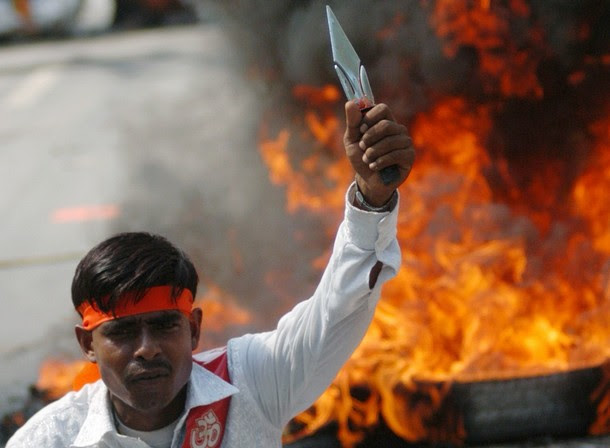
VHP
(Visha Hindutva Psychopath) chief and its international secretary
general has also been camping in Allahabad lending weight to the belief
that the saffron family wanted consensus over its CM candidate for the
largest Country’s state as the BJP still had a lot of political ground
to cover in Uttar Pradesh if it wanted to form government in the state
after nearly three decades, referring to the Kalyan Singh regime that
had come to power in the wake of the Ram temple movement.
The RSS
has also asked the BJP to not repeat the follies of the Bihar elections
in which the party had been routed by the Nitish Kumar-Lalu Prasad
combine despite an aggressive campaign by Murderer of democratic
institutions(Modi) and other bigwigs of the party.
The dictator
dictates terms to all other than 1% chitpawan brahmins to be their
boot-lickers, stooges, chelas, chamchas and practice to eat one’s own
mothers’s flesh and to give preference to its own cadre and leaders when
it comes to distribution of tickets despite the fact that so many
leaders from rival parties-Samajwadi Party have started thronging to the
BJP’s fold,” says the dictator. Only around 30 per cent of those
crossing own mother’s flesh eaters over to the BJP from outside would be
given tickets in the polls.
Own mother’s flesh eaters who left
the Sarvajan samaj in including Koeri Kushwaha etc., as the deal with
BJP went sour at the last moment.Those who left the samaj left alone and
the samaj did not follow them as Ms Mayawati says.
BJP is having
a hard time attacking Mayawati post ‘prostitute’ remark. Ms mayawati is
considered as Maha Mayawati by the entire Sarvajan Samaj including
SC/STs/OBCs/Minorities/poor upper castes. BJP’s own kith and kin also
has not taken this remark lightly as it was an insult to the whole women
all over the world.
While the BJP is busy figuring out its own
permutation and combination in Uttar Pradesh, its allies are also eying,
what they call their legitimate share, in the political landscape of
UP.
While on one side, the BJP is planning to go all alone, along
with its own strategic alliances with local parties which it feels will
get them crucial votes, on the other, its NDA allies are thinking on a
different path.
Own Mother’s Flesh eaters Rashtriya Lok Samta Party
[RLSP], Republican Party of India (Athawale) [RPI-A] and even Lok Jan
Shakti Party [LJSP] are also eying some piece of the electoral pie in
Uttar Pradesh. The BJP so far has not evinced much interest in these
proposal but allies are quite keen that BJP not only enters the tie-up
in UP but also distributes seats proportionate to the caste strength of
these parties. as these parties are just use and throw curry leaves.
They are considered as boot-lickers, stooges, slaves, chamchas, chelas
and own mother’s flesh eaters by the dictator.
It’s not that the
BJP is completely averse to having local tactical alliance with smaller,
caste-based parties, which adds to their vote base as well as chances
of winning specific seats. Take the example of Suheldev Bhartiya Samaj
Party [SBSP], which is a small outfit but with good clout on SC/ST and
backward voters in eastern UP district. Not only this, even the Apna Dal
MP, Anupriya Patel, made it to the Murderer of democratic
institution(Modi) with BJP’s eyes fixed on Kurmi votes with out
realizing that they left the samaj alone and the samaj did not follow
them.
Brajesh Pathak joining BJP is a fine display of political opportunism
But
the BJP is notwilling to give away few seats to its allies who don’t
have good presence in UP barring a substantial chunk of their respective
caste in several pockets of Uttar Pradesh.
Kushwaha had resigned
from BSP after he was accused of involvement in the murder of two CMOs
in UP. Currently, he is heading Jan Adhikar Manch. But despite this,
Upendra Kushwaha has grand plans for himself and his party.
A
leader in RLSP said, “We are in the process of identifying around 100
seats which has a strong Kushwaha presence and we are trying to get as
many local leaders into the party fold as possible. First we will do
this exercise and then we will talk to Amit Shah about seat-sharing
arrangement.” However, he also had a word of caution for the BJP: “If
the BJP doesn’t listen to us then we will be forced to fight on around
100 seats on our own.” without realizing that they left the samaj
alone and the samaj does not follow the own mother’s flesh eaters.
Founder of BSP
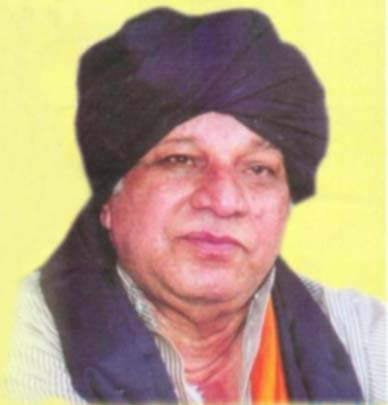
Founder of Bahujan Samaj Party
“I will never get married, I will never acquire any property, I
will never visit my home, I will devote and dedicate the rest of my life
to achieve the goals of Phule -Ambedkar movement”

These pledges remind the work of Manyawar Kanshi Ram Sahib who is
remembered in the history of India as a True leader of Bahujan Samaj .
The journey of Manyawar Kanshi Ram Saheb and his movement of
socio-cultural revolution and economic emancipation of Bahujan Samaj
started way back in 1964. Kanshi Ram, the eldest son of Mr. Hari Singh,
resident of Khawas Pur village of Punjab ’s Roper district, was born on
15 th March, 1934 , in a Sikh family belonging to the Ramdassia
Community. He completed B.Sc. and joined as an assistant Scientist in
DRDO in Kirki Pune Maharashtra in 1957 where he was exposed to the bad
breath of Hindu social order i.e. atrocious caste system. In the
ordinance factory, where Kanshi Ram was working, the management
cancelled the holidays of Dr. Babasaheb Ambedkar Jayanti and Buddha
Jayanti and instead granted Tilak Jayanti holiday and an additional
holiday during Diwali festival. As a reaction to this, not the
Ambedkarites from Maharashtra but a Scheduled Caste Mr. Dina Bhana, from
Rajasthan, protested against the cancellation of these two holidays.
Dina Bhana’s protest resulted in his suspension. By this atrocious act,
agitated Kanshi Ram fought the legal battle for Dina Bhana.
As a result, not only was Dina Bhana reinstated but the holidays were
also restored. The unjust and casteist act on the part of management
resulted in a new awakening in Kanshi Ram, as he did not properly
realize the casteist divisions in his youth in Punjab . Thereafter
Kanshi Ram studied the literature of Dr. Babasaheb Ambedkar, the biggest
destroyer of Brahmanism after Buddha, Jyotiba Phule and Periyar. Kanshi
Ram Ji read “Annihilation of Castes” three times in one night which
created not only an impact on Kanshi Ram, but shaped his thinking and
future course of actions. Beside Dr. Ambedkar’s writings, Mr. Kanshi Ram
found the path of further movement in Dr. Ambedkar’s plan for political
action. Manyawar Kanshi Ram Ji quit the job in 1964 and decided that he
will never marry and devote his life for social transformation.
On 24 th September 1944 , at Madras , Dr. Babasaheb declared the
political goal of his struggle. Dr Ambedkar said, “Understand our
ultimate goal. Our ultimate goal is to become the rulers of this
country. Write this goal on the walls of your houses so that you will
never forget. Our struggle is not for the few jobs and concessions but
we have a larger goal to achieve. That goal is to become the rulers of
the land.” On 4 th October, 1945 , in the Working Committee meeting of
All India Scheduled Castes Federation again he elaborately stressed on
the political power and said , “Politics should be the life-blood of the
Scheduled Castes.” Since politics of Congress party, the mouthpiece of
the dominant castes was detrimental to the very existence and interests
of backward class people, Babasaheb tried to form a broad - base
movement of all the victims of Brahmanism.
On 18 th March, 1956 in a public meeting at Ram Leela ground, Agra ,
he said that the highly qualified people belonging to SCs have betrayed
us. They are occupying the key posts in government and doing nothing for
their poor, oppressed brothers and sisters.
It was a great loss for the movement when Dr. Babasaheb unexpectedly died on 6 th December, 1956 .
After the death of DR Ambedkar, the Republican Party of India (R P I)
as visualized by Dr. Ambedkar was formed on 3 rd October, 1957 . But
from 1958 the party began to split up under various leaders. The biggest
set-back to the party was that, it became a party of Maharashtra and
the Mahars (later converted to Buddhism after 1956) and the other
sub-castes remained the supporters of Congress and others. The clash of
personalities and personal political ambitions took the caravan in a
reverse direction rather taking ahead.
Manyawar Kanshi Ram Ji noticed the dynamism of Dr Ambedkar’s
movement. He started working with Republican Party of India. After near
about eight years of working with Republican Party of India, he became
disillusioned with its functioning. His dream of Ambedkarite movement
was completely shattered when Dadasaheb Gaikwad joined the hands with
Mohan Dhariya from Congress for a petty one Lok-Sabha reserved seat and
few lakh rupees. He observed that supporters of RPI were celebrating the
pact of RPI and Congress where RPI got just one seat and rest of seats
were given to Congress. This event was the beginning of his dissociation
from Republican Party.
Manyawar Kanshi Ram Ji decided that he will develop a society which
will work to spread the thoughts of Dr Ambedkar and other social
reformers and will never sell themselves for a small gain. He
independently started organizing the employees of Scheduled castes,
Scheduled Tribes and Backward Classes mainly from Pune, Bombay , Nasik ,
Nagpur and Delhi .
He traveled all over the India along with his few activists to know
why Caravan of Dr Ambedkar was brought back rather than taking ahead.
During these days he never bothered about his health, food, transport
and worked tirelessly to awaken the educated employees. Organization of
employees of Backward Class and Religious Minorities, after doing a
necessary preparatory work within a period of five years decided to
float an organisation in 1973. As a result of it, and as per the vision
of Dr. Ambedkar, Kanshi Ramji’s started his first organization on 6 th
December 1978 in Delhi , called as BAMCEF. Subsequently, he formed
Buddhist Research Center (BRC), DS-4 and BSP.
Kanshi Ramji decided to take the Caravan of Dr Ambedkar ahead and he
considers it as his responsibility to fulfill the same. Then he started
working among educated employees and awakens them to work for the
upliftment of the downtrodden. In this process he was successful to a
large extent in awakening, realizing and transforming the expectations
of Dr Ambedkar from educated class. After the necessary ground work and
positive response from some employees in Poona , Nagpur , Delhi and
other places Kanshi Ramji decided to launch an organization for pay-back
to society. Thus, the idea of BAMCEF was conceived on 6 th December,
1973 . After ceaseless field work throughout the country for near about
five years the birth of BAMCEF took place on the lawn of Boat Club in
New Delhi , on 6 th December 1978 . During this time, he conducted
several cadre camps, meetings, seminars in different parts of the
country to awaken the employees. The basic aim of BAMCEF was to develop
genuine and capable leadership among the oppressed. Basically it has
been the organization aimed to build up the non-political roots for the
success of Dr. Ambedkar’s political vision and action. BAMCEF’s typical
feature was that it was an organization of the employees, by the
employees but not for the welfare of the employees. The first concept
given by Kanshi Ram Ji was “people who should succeed politically must
have strong non-political roots”
He witnessed the failure of Ambedkarite movement in Maharashtra ,
Kanshi Ramji had realized that the people whose non-political roots
were not strong were bound to fail politically. They can have their
political party, but they cannot succeed politically. Therefore, in
order to strengthen the non-political roots of backward class people, he
began BAMCEF experiment and spent 10-11 years in organizing the
educated employees of SC/ST/OBCs and Minorities, who were benefited by
the policy of reservation. BAMCEF created a new missionary political
conscience among the backward caste educated employees and also
established a national network for further Kanshi Ram’s movement.
Kanshi Ram Ji did not project himself a leader but worked silently as
organizer and hence he did not mind to invite Ram Vilas Paswan,
Karpoori Thakur to address 3 rd National Convention of BAMCEF which was
held at Chandigarh on 14 th -18 th October 1983 .
After spending 20 yrs of his young age Kanshi Ramji realized that
merely organizing employees would not be enough to fulfill the dreams of
Dr Ambedkar. Unless they get power and cannot become rulers. Therefore
he created another concept, i.e . ‘Power will be the product of
struggle’. He realized that Employees cannot do struggle hence he stared
DS-4 Dalit Shoshit Samaj Sangharsh Samiti. According to him, “not that
our people were not struggling. They were struggling, but not for
themselves. They were not struggling for their own cause. They were and
are struggling for somebody else as stooges. Because we are passing
through the Chamcha Age, the era of stooges, and as stooges we are
struggling.”
Books
Kanshi Ram in his historical book, “THE CHAMCHA AGE”, (an Era of the
Stooges) published on 24 th September, 1982 , on the occasion of 50 th
anniversary of the Poona -Pact, has vividly exclusively dealt with the
disadvantages of the Chamcha Age.
A) Caste and Community-wise Chamchas.
1 ) The scheduled Castes - Reluctant Chamchas.
2) The Scheduled Tribes - Initiated Chamchas
3) The Other Backward Castes - aspiring Chamchas
4) The Minorities - Helpless Chamchas.
B) Party - Wise Chamchas.
C) Ignorant Chamchas.
D) Enlightened Chamchas or Ambedkarite Chamchas
E) Chamchas of the Chamchas.
F) Chamchas Abroad.
It will be apt to say that, Kanshi Ram has been the only leader who
has understood the damage caused by the Poona Pact and applied the
necessary measures as it was expected by Dr. Babasaheb. His only book
deals with the Chamcha Age phenomenon in detail.

Kanshi Ram has been very crystal clear in understanding the Poona
Pact and therefore he said, “Babasaheb Ambedkar wanted to take the
downtrodden people from Dark Age to bright age. But Gandhi intervened in
this process of change. Hence we entered into a different age then
onwards, which I have named as the age of Chamchas-the Chamcha Age-the
era of stooges”.
Thus, from the day of launching D -S4, an agitational and awakening
wing of BAMCEF, till the formation of Bahujan Samaj Party, on 14 th
April, 1984 , Kanshi Ram conducted several experiments of social action
countrywide successfully. The programmes created sufficient awareness in
the Bahujan Samaj about their socio - political, economic and cultural
status. Hence, D-S4 proved as a milestone preparation for the long
battle of political action, social transformation and economic
emancipation.
Up to 1976, Kanshi Ram, being in Pune - the center of Maharashtra
witnessed the down-fall of Ambedkarite movement. In his scientific
analysis of the Chamcha Age, he has focused on the fall of Ambedkarism
from the first general election i.e. 1951 till 1980. By 1971 alliance
between R P I and Congress, his all hopes of Ambedkarite movement dashed
into dustbin. Therefore, following the advice of Dr. Ambedkar i.e.
‘political power is the key to all social progress,’ he felt absolutely
essential for the members of all oppressed and exploited communities to
prepare themselves for agitational and political action.
Most of the politicians, Researchers failed to understand the vision
of Kanshi Ram Ji and hence could not understand the Role of BSP in
Indian Democracy. Today in India there are 7 national political parties
which are lead by so called upper caste Hindus. They control all the
affairs of their parties to establish the rule of Hindu upper castes and
exploit the 85% Bahujan Samaj.
Manyawar Kanshi Ram Ji refined the rules of Indian politics. He
developed a concept that the unstable government at center is beneficial
for Bahujan Samaj as you can derive maximum advantages to deprived
sections. Therefore he used say frequently,” I want Mazboor (weak)
government at centre and not Majboot (strong) till we reach to the
Centre”. Kanshi Ram Ji articulated positively the Bahujan ideology from
Buddha to Ambedkar. Kanshi Ram Ji always acknowledged the contribution
of Ex-Mahars now Buddhists for supporting Dr Ambedkar in his war against
Manuvadi system. He said,” I have learnt two things from them one how
to learn the movement I leant from Dr Ambedkar and second how not to run
the movement from his followers in Maharashtra .”
Manyawar consistently led his movement for almost 38 yrs from
1965-2003 till his illness. Bahan Mayawati has taken up the unfulfilled
dream of Manyawar Kanshi Ram Ji and proved to be the successor of Kanshi
Ram ji’s sociopolitical struggle when she became CM of UP 4 th time
with an absolute majority in may 2007.
October 9, 2006, he died of a severe heart attack in New Delhi.
CONGRATULATIONS ON BIRTHDAY OF Manyawar KANSHI RAM JI.
CONGRATULATIONS
FROM AICS ON THE BIRTHDAY OF MANYAWAR KANSHI RAMI JI.
Kanshi Ram (March 15, 1934 to October 9, 2006) also known as Bahujan
Nayak Kanshiram, Indian politician and Social Activist of SC/ST
Raidasia, Sikh background from Ropar district, Punjab, founded the
Bahujan Samaj Party (BSP) to give political power to the marginalized
section of the society.
Kanshi Ram main primary source of inspiration was “Annihilation of
Castes” Dr. Ambedkar’s writing
Kanshi Ram was a great organizer, he created a political conscience
among the educated backward caste and SC/ST employees. Kanshi Ram
conducted several experiments of social action countrywide successfully.
The programmes created sufficient awareness in the Bahujan Samaj about
their socio - political, economic and cultural status. Political
power is the key to all social progress he felt absolutely essential
for the people of all oppressed and exploited communities to prepare
themselves for agitational and political action.
According to him, “not that our people were not struggling. They were
struggling, but not for themselves. They were not struggling for their
own cause. They were and are struggling for somebody else as
stooges. Chamcha Age, the era of stooges,.
Manyawar consistently led his movement for almost 38 yrs from 1965-2003
till his illness.
In 1978 he formed the, BAMCEF-Backward(SC/ST & OBC) and Minority
Community Employees Federation. The BAMCEF was purely non political,Non
Religious & Non Agitional organisation.
Later on he formed another Social organisation known as DS4.
In 1984 he founded the Bahujan Samaj Party.
On October 9, 2006, he died of a severe heart attack in New Delhi.
Kanshi Ram, who suffered from multiple ailments such as stroke, diabetes
and hypertension, was virtually bed-ridden for more than two years.
Kanshiram wrote two books
“An Era of the Stooges” (Chamcha Age)
“New Hope”
Round Table
LUCKNOW:
It is now turn for renaming awards for small industrialist, craftsman
and export promotion after SC/ST icons in Mayawati-ruled Uttar Pradesh.
Till now, this practice was confined to parks and monuments, still under
construction and refurbishment at a whopping cost, which is estimated
to have already crossed Rs 10,000 crore.
A
decision to this effect was taken by chief minister Mayawati at a
cabinet meeting held here on Saturday.As per the cabinet decision, the
small industrialist state award scheme will be renamed as Baba Saheb Dr
Bhimrao Ambedkar Small Industrialist State Award Scheme.
Similarly,
the state award given to special craftsman will be renamed as Babasaheb
Dr Bhimrao Ambedkar Special Craftsman State Award Scheme.Export award
has been named after BSP founder Kanshiram.
These
personalities had made an important contribution towards the uplift of
the country and the society. The decision taken by the cabinet will not
only enhance the prestige of the awards but also the persons getting
them will feel proud, said a government spokesman.
The
cabinet also approved setting up of UP Forest Development Tribunal
under the Societies Registration Act, 1860. The body will implement and
monitor the scheme launched with the help of the Centre for increasing
forest area and starting an affroestration drive with the support of
villagers under a national programme.
KANSHI RAM ON EDUCATION ON THE EVE OF 50 YEARS OF INDEPENDENCE
 Education
Education
and Health are basic necessities for enlightenment of mind and social
emancipation. Mahatma Jyotiba Phule, the father of India’s Social
Revolution searched for causes of degradation of Shudras and Ati
Shudras. His considered conclusion was that the root cause of
degradation was ignorance born out of lack of education.
As
a matter of fact the Caste System denied education to the Shudras and
Ati Shudras. When Phule was sent school by his father, people of his own
community condemned it and boycotted him for violating the custom. But
equality of status is impossible without imparting to the oppressed a
level of education and health equal to others in the society.
Education
not only widens the mind and liberates if from outdated thoughts and
practices, it enables a man to claim and occupy positions in life. It is
the main instrument of empowerment. Education liberates one from most
of the social barriers like Untouchability. Equal acceptability of the
downtrodden in the society can surely be established by education. An
illiterate man is a permanent destitute in a competitive society.
Literacy improves ability to compete. It is a factor securing social
justice and freedom from dependence.
EFFORTS TO IMPROVE LITERACY OF THE OPPRESSED
Much
of the planned efforts to improve education standards of the oppressed
classes have remained on paper. Our planners have laid special emphasis
on spreading education in rural areas, particularly areas inhabited by
Scheduled Castes and Scheduled Tribes.
Priority
has been attached on opening primary schools in these areas in every
plan. Special Funds have been earmarked for construction of school
buildings in these areas.
Youth
from these classes have been given special incentives to get trained in
Education. Many Scholarships for Higher Education have been instituted.
In most areas of the Country, non-Formal and also Informal Education
for the Children coming from these Classes, through Anganwadi System and
Ashram Schools has also been included in the Plans.
In
spite of the above efforts the actual achievement has not been
encouraging at all. In practice the problem has been gaining much larger
magnitude and efforts of government have not kept speed with the need.
This is primarily due to paper planning, lack of political will to
implement the schemes, and perhaps lack of intentions to implement.
Due
to lack of resources and also social acceptability of the Scheduled
Castes and Scheduled Tribes, they have been comparatively more deprived
of facilities for education, than the general mass of Indians.
While
the rich classes automatically started enjoying the benefits of
education .and higher educations once the country became free, the
oppressed needed special care.
Dependence
on economic resources and social opportunities, has marred the chances
of most Oppressed Classes to reap full benefits of the Government
Schemes. Had there been, a more comprehensive approach the poor would
not have been at the mercy of these factors. It is sad that the gap of
literacy level between the oppressed classes and the general population
has increased from one plan to another.
Sixth
All India Educational survey conducted by NCERT in collaboration with
NIC revealed the startling fact that there was a large gap between the
total number of habitations and those covered by primary schools. What
is more surprising is the fact that there was no data on how many of
these uncovered habitations fall in tribal sub-plan clusters, or
Scheduled Areas or areas predominantly inhabited by the Scheduled
Castes. The survey also revealed imbalance between in the growth of
number of schools in urban and rural areas. Considering that a majority
of the Scheduled Tribes and Scheduled Castes live in rural areas, these
figures were relevant.
Out
of a Total of 10,59,191 Habitations in the Rural Areas only 5,32,962
have Primary Schools, 1,45,824 Habitations have Upper Primary Schools,
53,174 have Secondary Schools and only 11,955 have Higher Secondary
Schools. Thus there are more than 5 Lakh Rural Habitations in the
Country forming nearly 50% of the Total Habitations, Do Not Have even
Primary Schools.
During
the Last Decade the Number of Primary Schools has increased by 19.62%
while in the Rural Areas by 7.57% only. The Argument generally given is
that Teachers Do Not Like to go to Rural Interiors, and therefore even
the Schools which have been opened in Rural Areas, must be Ill Equipped
and Badly Run. Very Little Attention has been paid to Recruit Local
Teachers.
No
Incentives have been given to Tribal and Scheduled Castes Communities
to Open their Own Schools. Such incentives would have gone a long way to
improve the social and educational standing of these oppressed castes
at par with upper castes and well to do sections of the society.
People
belonging to higher and well to do castes have Opened Schools and
Colleges, and many of them have been given lots of Incentives, Free Land
or Concessional Land, Financial Grants, Lots of Aids and Liberal Loans
on Soft Interests in the Name of Education. Are these Cruel Jokes on the
Poor Weaker Sections? What Fraud are these?
As
against the National Average of 52.21% Literacy Rate, the Literacy Rate
of Scheduled Castes is 37.41%. Although 2/3rd of all Males in the
Country are Educated; only 50% of the Males belonging to the Scheduled
Castes are said to be Literate. That is they can Sign and Write their
Names. That is the Literacy in this Country, even Now.
As
far Women, more than Three Quarters of Scheduled Caste Women are
Illiterate, as against the Literacy Rate of 39.29% Illiteracy of Women
in General. In some particular States, these figures are even more
alarming. In UP, the State with the Largest Population of Scheduled
Castes, the Literacy Percentage of Scheduled Caste Women is less than
10%.
Literacy
Levels of the Scheduled Tribes is also a sad story. The gap between
literate persons belonging to the Scheduled Tribes, and those belonging
to the General Population was 18.15% in the Year 1971. This gap
increased over the Years to 19.88% in 1981 and further widened to
22.61%. As per the last Census of 1991, as many as 70.40% Tribals were
Illiterate. This, as compared to only the 47.79% Illiterate Persons
amongst the general population. This is a sad Reflection on the Nation.
Literacy
Level of the Tribal Women shows even worse statistics. The gap between
Illiterate Tribal Women and Women belonging to General Population was
14% in 1971. And this Gap Increased to 16% in 1981 and further Widened
to 21.04% in 1991. As of today 8 out of 10 Tribal Women are Illiterate.
How then can the general Parameters of Female Emancipation, hold good
for them?
The
Rate of Growth of Literacy among the Tribals, over the last Three
Decades has been very Sluggish, and far from Satisfactory Levels as
would show them the light of Freedom and Self-Dependence. The Literacy
Levels increased by 6.78%, during 1971-81 and then 16% during the decade
1981-91 for the General Population, while among the Tribals the Rate of
Increase was only 5.05% and 13.25%.
The
Dropout Rate of the Scheduled Tribes, at the Primary Level is 64.53% as
against the 47.93% amongst the General Category. This is an alarming
reflection on the dangerous Socio-Economic Constraints, the Tribals
increasingly are Finding Impossible to Overcome. They continue to be
slaves of these limitations.
Unless
Literacy Levels Improve among the SC&ST Dalits, their Integration
in the Society at large, will not be possible. It is therefore, clear
from all the above figures that, majority of the Scheduled Castes,
Scheduled Tribes and other Oppressed Classes, who live in the Rural
Areas are deprived of, Basic Facilities of Education, even in this 50th
Year of the Nation’s Independence.
As
for all the Adult Education Programmes, Rural Education Schemes etc,
the least said is better. All those Teachers and Head Masters and Head
Mistresses, who do not want to go to Rural Areas to Work and Teach, and
Pay heavy amount of Bribes and Kick Backs to remain in their own big
Towns, large Cities, particularly to get their Postings in the State
Capitals are Posted In-Charge of these Schemes. Will they be ever
Interested or Sincere in any Adult Education Programmes, Rural Education
Schemes and the like. Never.
As
Administrators in the Education System, all those Teachers and the Head
Masters and Head Mistresses, who do not want to go to Rural Areas to
Work and Teach, instead of taking up Improvement of Rural Schools, and
suggesting creation of better facilities and good Developments, will
only Sleep and be constantly Complaining. Or they will only prefer to
Close Down and Down Grade, even the existing Schools than Developing and
Improving any of them. They may Demolish Old School Buildings and Class
Rooms, instead of Repairing and giving new and additional Lives to the
Old Ones, and Utilise the available Funds to Create or Add better Bigger
Additional and New Infrastructures. Instead of Opening New Schools in
Villages and SC&ST Hamlets, they only keep building New School
Buildings and Class Rooms, in the Existing Schools in ‘caste hindu’
Villages to Please the big rich Feudal Landlords there, powerful
Chairmen of Panchayats, or influential Village Heads, to get Commissions
from the well connected local Contractors, taking up the work they
approve and sanction for Construction. They make money in silently
pulling down the old school buildings and class rooms, and take away the
Doors Windows and Wood in Roofs.
Those
in-charge of all Adult Education Programmes, Rural Education Schemes
etc, keep avoiding and postponing their visits to the backward Rural
Areas, giving as excuses and complaining about the lack of Bath Rooms,
Toilets, and non-availability of good Food, that too on a complimentary
basis, in the distant and remote poor backward Rural Areas. Hence
whenever forced to go to the remote poor backward Rural Areas, they
start from their Residences leisurely around 1000 or 1030 hours, after a
heavy breakfast they call as Brunch, where as their daily Working Hours
start at 0800 or 0900 hours. Then also, they move only, when they
manage to get some Govt Vehicles. But they are meticulous, in applying
for TA&DA for visiting the Village Schools in the Rural Areas. That
is only, a big and sheer waste and drain of Public Tax Payers Money, and
diversion into their private pockets, purse and Bank Accounts.
In
the above circumstances, nothing gets done, and Literacy hardly
improves in the Rural Areas. In other words, there is No Hope of their
Acquiring even the Basic Means of Empowerment. How can it be expected
that in the near foreseeable future, these oppressed and downtrodden
will be able to gain a social status equal to others, and Live as Free
and Self-Dependent Citizens? They obviously do not have any hope, to
Gain Freedom during their life time.
Added
to this is the lack of Incentives and Ultimate Frustration. Those few
from the Rural Areas, who somehow manage to Study and Pass, can not get
any Jobs. Only those Children in the Towns and Cities, like the Children
of all the Adult Education Programmes, Rural Education Schemes etc, the
least said is better. For all those big fraudulent Teachers and Head
Masters and Head Mistresses, who do not want to go to Rural Areas to
Work and Teach the Rural People, though working in Education Department
of the Govt, for assured better Salaries, good Working Conditions,
decent Perks like Quarters for their Residential Accommodation, as well
as Vehicles, TA&DA for Visits outside their Schools and Offices,
send their Children to Private Schools and Missionary Institutions for
English Education, wanting to grab all Jobs. Hence many Rural Children,
do not get any Jobs even after their Education in Schools and Colleges.
Hence they are cumulatively cheated and deprived.
It
is pity that, all the High Flown Ideas and Schemes relating to
‘Education for All’ have remained on paper, without tangible results. It
is also a pity that those who belong to the Privileged Classes of the
Society, have never Understood the Problem that the larger Segments of
the Society are now Alienated from the Mainstream. Caste System, or
rather the vertical hierarchy of the Castes, have always closed the
doors of such interaction, between the communities and classes. Hence,
the caste hindus and privileged classes, continue to exploit the
illiterate masses, and the Vested Interests are stretching out the Rural
Miseries, Prolonging the Dependence of the Illiterates on the
Exploitative Fraudulent Literates.’
Kanshi Ram had also written once about the Governments and Education as follows -
SUCCESSIVE GOVERNMENTS HAVE FAILED
‘Successive
Governments have failed, to give Compulsory Education to the Children.
As a result, nearly 60% of Population in the Country, especially
Children are still Illiterate.
Why
this situation, even after 50 years of Independence? And the Position
in Villages, has become worse than ever before, due to neglect of
education, exploitation in agriculture, increasing poverty, raising
numbers of population etc.
Today
one can see many High School Studied Children, those who have studied
up to Tenth Class, failing. Why? Because their Teachers were not
bothered to Teach in the Class, but Preferred to Give Coaching and
Tuition outside the School, and in many cases in their Homes for a big
Consideration, right from the beginning of Class One.
Most
of the Teachers had the Support Backing and Cooperation of their
equally Guilty Irresponsible Head Masters and Head Mistresses. Hence the
Teachers could easily cover up their mistakes and failures, and the
later also shielded and protected most of the Teachers failing and
unwilling to Teach the Children in their Classes. Hence, the Students
who never knew or learnt anything at all, were merrily and conveniently
passed and promoted to the next higher class, providing them with No
Incentives to Learn, or Holding out No Threat of Detention in the Class
for another Year for their Failure.
At
times there was also for some consideration, in passing such failing
and failed students, as the Parents of such Children were willing to Pay
or Paid well, and Looked after the Head Masters/ Head Mistresses and
the Teachers with good costly Gifts like Jewelleries and other
Valuables, Cash, or in Kind like Household Goods, bagfuls of Rice and
other Grains, or Ground Nuts, Pulses and Fruits. Others, mostly Children
of poor Parents, such as those from the SC&ST Communities, could
not afford to give any such gifts or other things. Hence such Children
were often rebuked in the class, or publicly before others in the School
and outside, or were severely punished. Capital Punishments to
SC&ST Children were frequent and very common. Thus, many SC&ST
Children were failed, made to Repeat the Class and Study again and
again, wastefully in the same Class, till they were openly and
compulsorily pushed out of the Schools. Often, the SC&ST Children
themselves dropped out of the schools, even before the completion of
their First Year in the Schools, or subsequently. For, they Find the
Schools were unfriendly, the class environment bad and not conducive to
Study or for any Learning.
The
SC&ST Children invariably felt and still feel that their Teachers
are often bad foolish negative; most of the times unhelpful
uncooperative unfriendly unsympathetic inhuman and cruel. Hence, most of
the children considered and still are of the opinion that, they are
only wasting their Times in their Classes and Schools. In addition, they
were and even now are facing unwanted humiliations, in the hands of all
the bad unsympathetic teachers, school authorities and their
classmates.
Children
from brahmin families could get good guidance and coaching from their
learned parents. Even there, those from poor families, and the children
from the savarna communities opted to get Tuitions from the Class
Teachers in their Homes.
The
Considerations of the Teachers, not to Teach in the Class, all their
Students in the School, and choosing to take private Tuitions at their
Homes were at times their Caste Considerations, SC&ST Children could
not get any Tuitions from such Teachers, to Learn and Understand their
Lessons which the Teachers were supposed to Teach in the Class Rooms of
the Schools. Most of the Times, the Consideration for the Tuitions was
Big Money. Since the SCs&STs were invariably poor, and that being
the prime reason for them sending their Children to Govt and Municipal
or Welfare Schools meant for the SCs&STs Backwards and the Poor,
they could not afford to Pay the huge Tuition Fees to the Cunning
Teachers, who were refusing to Teach and avoiding to Educate the
Children of their Classes in the Schools. Hence SC&ST Children could
not Learn their Lessons from their Teachers.
Most
of the Teachers in Govt and Municipal Schools being brahmins and other
Savarna friends of the brahmins, living in upmarket areas, most of the
SC&ST Children could never go to their Teachers Homes for Tuitions,
even when some of their Parents could somehow afford to pay for the
Tuitions. Hence, the Children could not get any Tuitions, in such cases
also to learn and understand their lessons.
The
Parents of many SC&ST Children are poor and illiterate, and their
surroundings also do not have any learned, reasonably educated men and
women, to help and guide them in their Lessons, the SC&ST Children
could never Learn any Lessons, or Understand even the small things they
had Learnt to Read Write and Could Remember and Recall.
The
Cumulative net result is that the Teachers, Head Masters/ Head
Mistresses, the Schools, Colleges, Lecturers, Professors, the Principles
and the Education System have failed and are failing our Students. That
is how, many of our Tenth Studied Children from many High Schools can’t
count cash, write or read any application or letter, or understand
anything, write anything, or read anything in any language including in
their own mother tongues, or the local vernacular language which is the
medium in their schools. Sadly, many can not even write their names. So
bad is the reality of our Teachers, Schools, Students and Education
System.
We
could still see many individuals who know nothing, passing their High
Schools, Plus Two Exams, even going to Colleges, and getting their
Degrees. That is because, someone else in their families or
neighbourhood, appears for them to write their Examinations and make
them Pass. That is a great Fraud and Cheating.
The
manipulations within the Education System are big serious Problem these
Days. Many things happen, most of the times with the help of the
Inspectors, Examiners and active Support of the Authorities.
What
then can we say of our modern Education, which the British so
meticulously built up for us, in the face of many stiff resistances and
strong oppositions from brahmins. The later seem to be finally
succeeding, in their desire and determination to deny education to the
masses, decades after their British Masters had left the shores of this
Country.’
Kanshi Ram had also said elsewhere –
Sadly
for all of Us, the Education System World-Over does not Teach Us,
anywhere at anytime our Own Individual Values, Ways of Living in our
Lives, Rights and Limitations, Women’s Rights, Family Commitments,
Community Rights, and our Responsibilities and Usefulness to the Society
at Large. Hence, most of Us are Unable to have our Aims Clearly, set
our Individual Goals in Life, Family Objectives and Community
Responsibilities. That is why all the Problems of Drifting, Waywardness,
Breaking up of Families, all the Irresponsibilities, Refusal and
Unwillingness to Help the Needy, Extend Assistance and Succour on our
own without being asked advised told to those in need and distress.
The
Oppressions of the Weak, Opportunistic Exploitation, betrayals cheating
and Swindling of our own people, and all those who trust and have faith
in us silently go on. That is why today, individuals are found to be
increasingly too Irresponsible, Exploiting, and families breaking down
and collapsing, just as Pack of Cards, unable to withstand any trials
tribulations, testing times, and even small problems. Individuals forget
that their beliefs faith outlooks are not of overriding importance than
the family, welfare stability security safety peace and future of their
own Children. Or the desire to take revenge and wreck vengeance on one
another in the family, forgetting that the others hand one had so
eagerly sought and so fondly and gratefully held happily and lovingly
not much long ago.
Many
Girls, Women and Lady-Teachers; Mothers Aunts Elder-Sisters; Cinemas,
Dramas, TVs, the Fashion Shows, Music Videos and Media are so
Irresponsible and Dress Badly that they all set bad Examples for other
Girls, right from their young Childhood. Computers, Internet, Social
Net-Works and Blogs all appear to be adding fuel to the already burning
situation. Many of them in fact really appear to be too Provocative to
Adolescent Boys and even Girls, if not setting many men on Fire.
We
don’t know why Teachers even in Missionary Schools and Colleges, can’t
wear close cut Blouses like the Nuns Teaching there. And, what is the
need for them, to push down the neck line cuts of their blouses in the
back, and show off their Shoulders and more than half of their Back;
expose their Cleavages at the front; Reveal their rich fleshy Tyres
Oozing-out, even Sagging and Flowing-down, as the bottom lines of their
Blouses Raise; show-off their Navel Button-Holes, as well as open up the
Stomach, down up to their Pelvic Bones, even though many oldies have
big scarred ugly pot-bellies? Why they change to such denigrating
degenerative dresses? That, though many Institutes and Colleges during
their Teacher Training Days, had enforced strict dress codes of wearing
uniforms with closely covering full length long blouses, so as to not
expose any of their flesh and skins; with their hair closely and tightly
coiled and worn neatly as nice buns, to be the model women Scholars and
Teachers for the other Girls Women Mothers and Students in all the
Neighbourhood, and in the Schools and Colleges?
Fathers
also appear to be very much Responsible for rapidly deteriorating
Situation, since they appear to be actually accepting permissive and
irresponsible for allowing permitting or keeping quiet and silent as the
Mothers and Elder-Daughters, or the Working Women of the Families going
out of their Houses, Dress badly indiscreetly or even provocatively and
indecently, showing-off, revealing, exposing themselves, and leaving
nothing for imagination, guess and thinking.
1ST ANNIVERSARY OF ODRF U.S.A. AND MANYAWAR KANSHI RAM JI INTERNATIONAL AWARD CEREMONY CELEBRATED IN PA, USA
ODRF 1ST Anniversary and Manyawar Kanshi
Ram Ji International Award Ceremony was organized on 25th October, 2008
at Chateau Granieri, 2522 West main street, Jefferson Ville PA 19401.
Dr. Sakya Mohan and Ms. Savitha Duraisamy compeering the event, the
program began with the lighting of the lamp and paying tribute to Dr.
Babasaheb Ambedkar, Dr. Martin Luther King Jr. and other revolutionist
by Ms. Shushma Thevar, the president, Temp Solutions Inc., USA, and Rep.
Thaddeus Kirkland, state
representative,159th district in Pennsylvania. Read More After the
lighting of the lamp Ms. the ODRF cultural team Prafulla Kamble,
Josephine, Dhammamitra Vikas, Pratibha Kamble and Pramanand Rangari
chanted Buddha Vandana. Dr. Sakya Mohan welcomed the dignitaries and the
participant and greeted the Dignitaries with a bunch of flowers. The
programme was lit up with the presence of personalities like Mr. Joe
Hoeffel, commissioner, Montgomery County, Rep. Thaddeus Kirkland, State
representative, 159th district in Pennsylvania, Mr. Ron starr, Ms.
Surabhi Garg, United States Indian political Action committee and
representatives from various Indian and US Organizations and
individuals.
kanshiram_international_award_

Mr.Ashok,
Ms. Neeta Bhole, Ms. Pratibha Kamble, Ms. Chitra, Mr. Praveen Lawande,
Ms. Pallavi shinde, Mr. Pramanand Rangari and Master Akshay Thevar sang
an awareness song on blind faith on different gods and goddesses and
urged to believe in science and rational thinking. After which Mr.
Praveen Lawande, Treasurer of ODRF presented the vision, mission and
background history of ODRF. ODRF aims at paving the way for sustainable
development by ensuring universal education, access to basic health care
services, creating equal opportunities and advocating human rights
issues of the most exploited communities. Keeping all these principles
as the centre, seven committed youth who in carrying the legacy of Dr.
Ambedkar, Phule, Shahuji Maharaj and Kanshiramji, joined hands to pay
back to the society by starting ODRF in the year 2007 under the dynamic
leadership of Mrs Sushama and Mr Michael Thevar.
It
was time to turn our attention to the activities of ODRF from 2007. Ms.
Nicola D’ Souza did a power point presentation on the ODRF activities.
In India ODRF concentrated on the following programmes:
· Sponsorships of the higher education of deserving students.
· Emergency Relief fund for an injured volunteer
· Support of various human rights activities of individuals & other
· Non-profits
Cleanliness drive in the USA
• Distribution of school supplies and distribution of Toys
• Coordination with international agencies to sensitize, promote and implement the affirmative action policies
•
Sensitizing the international community against caste discrimination in
India and educating the state representatives, congressmen and senators
in USA to fight against caste discrimination in India through
international community pressure.
•
Social awakening through the celebration of the birth and death
anniversaries of Buddha, Dr Ambedkar, Periyar and other great
revolutionaries when Mr. Joe Hoeffel, Commissioner, Montgomery county
addressed the gathering he said “I am impressed with the activities of
ODRF and Mr. Mike for the commitment and goodwill for the social
cause. ODRF is fighting against caste system in India and working for
the cause of the oppressed” he concluded his speech by saying “we want
to make a change so fight for what we believe”.
Master
Akshay Thevar received a standing ovation for his speech on Dr.
Babasaheb Ambedkar and America. In his speech, he stated that there is a
strong link between Dr. Babashaheb Ambedkar and USA. He studied in
Columbia University from 1913 to 1916 this was the time when he came in
contact with the world most famous personalities like Prof. John Deway,
James Shotwell, Edwin Seligman and James Harvey Robinson. These people
created a great impact on Dr. Ambedkar in many ways like teaching him
democracy, Anthropology,economics, civil rights and pragmatism. Mr.
Pramanand Rangari, one of the board members of ODRF shared his
experience. He said that Temp Solutions Inc. is committed to the
principles of corporate social responsibility and good corporate
citizenship. He added that he is grateful to Temp Solutions for giving
him an opportunity to Work in US\A and gain international expertise in
the field of mental health, to develop professionally and ensure that we
should pay back to society with the available resources.
Mr.
Dinesh Dalvi the treasurer of ODRF started his sharing with the words
of Dr. Martin Luther King Jr, “KEEP HOPE ALIVE”. ODRF lives by these
words, be it the school bag distribution or toys distribution… or
fighting for social justice undertaken by ODRF, it has always succeeded
in installing hope for better future based on liberty, equality and
fraternity. Actions speak louder than words. ODRF activities speak
thousand words.
Pratibha
Kamble, a perfect example of how temp Solutions Inc. is committed to
its cause. A dalit girl from India shared her experience of coming to
USA. “I had never dreamed that I will be going to USA and work in a very
reputed Health Care Organization. This was simply because of one reason
that I completed my entire education in my mother tongue that due to
lack of exposure to speak and write in English. Mr. Michael sir has
been in constant contact with me and my family and became the source of
motivation to improve my communication skills and it is only because
front of you. This is a big change in my life that I came to USA and
away from my parents. After my arrived in Pennsylvania Mr. Michael sir
and family as treated me like their own sister and never let me feel
that I was alone”.
A
man who could never be forgotten and who is the source of example for
many youngsters and the man with the mission of paying back to the
society shared his views on ODRF and other activities. He started his
speech by paying tribute to the great personalities like Gautama Buddha,
Saint Ravidass, Saint Ghasidass, Mahatma Jyothiba Phule, Shahuji
Maharaj, EVR Periyar Ramaswamy Naikar, Narayana Guru, Dr. Babasaheb
Ambedkar, Manyawar Kanshiramji and from the USA Martin Luther King Jr,
JF Kennedy, Abraham Lincoln and all other warriors who have dedicated
their lives to bring equality, justice, liberty and fraternity. Dalits
are the most oppressed communities of Indian society along with Tribal
communities. 250 Million Dalits in India and more than 300 Million in
south Asia are victims of 3000 year old Hindu caste system. The
fundamentalist caste forces in India and world over who are against
giving equal rights to Dalits are great threat to global Human Rights
concerns. Martin Luther King Jr, rightly said, “Injustice anywhere is a
threat to justice everywhere”. The globalization and liberalization also
opened up societies for human rights scrutinizes. Then he drew the
attention of the members to the future plans of ODRF
He
concluded his speech by saying “we will be made to believe that change
need to happen, we want to live as human beings and will also need to
recognize others as human beings. And incorporating the proactive
policies to regain the economic rights to Dalits would be a small but
significant step towards larger goal.”
ODRF
initiated the awards in the name of Manyawar Kanshiramji and Bhante
Sangharakshita who played a major role after Dr Ambedkar to carry
forward his mission. The awards will be given to the activists engaged
in sociopolitical and Dhamma movement.
Manyawar
Kanshiramji was born on March 15th 1934 in a Ramdasiya Sikh Community
in Khavaspur Village of Ropad District in Punjab, INDIA. During 1960’s
while working as a scientist in Pune, he was exposed to the bad breath
of Hindu Social order i.e. atrocious caste system. This was the turning
point of his life and he travelled all over the country to awaken the
educated employees who got benefitted due to the affirmative action
policy but failed to serve the community. He decided that he will never
get married, never acquire any property, and never attend any ceremonial
function, marriage function or a party. He also decided that he will
devote and dedicate the rest of his life to achieve the goals of Shahu –
Phule – Ambedkarite movement.
During
his life journey of 72 years, he founded many organizations to achieve
the unfulfilled dreams of Dr Ambedkar like BAMCEF, DS4, Buddhist
Research Centre, and Bahujan Samaj Party. It was the vision and
sacrifice of Manyawar Kanshi Ram Sahib that Bahujan Samaj Party could
capture the power in Uttar Pradesh 4 times. It was his commitment,
dedication and vision that today a woman from oppressed community ‘Bahan
Mayawati’ is the Chief Minister of India’s Largest State, Uttar
Pradesh.
Dr.
Ambedkar told his people that “politics is the master key by which you
can open any locks”. Manyawar Kanshi Ram Ji brought the Socio-Political
revolution in India and united People from SC, ST, OBC & Converted
minorities which constitutes 85% of India’s population to become the
rulers in India. He could not see his dream fulfilled as he died on 9th
Oct 2006 due to long illness. But, his million of followers are working
day & night to fulfill his dream of capturing India’s Parliament in
2009 general elections.
Manyawar
Kanshi Ram Ji’s prevented millions of people turning into ‘Uncle Tom’
using pay back to society strategy. He changed the dimensions of
politics in India which was the monopoly of dominant castes.
Taking
the inspirations from life of Manyawar Kanshi Ram Ji ODRF decided to
honor personalities worldwide who contributed towards upliftment of
marginalized people. To appreciate and recognize the contributions of
such personalities, ODRF started an award ‘Manyawar Kanshi Ram Ji
International award’ from the year 2008.
This
year Rep. Thaddeus Kirkland, state representative, 159th district in
Pensylvenia and Dipak Panzade with Manyawar Kanshi Ram Ji award for
their contribution in sociopolitical movement in India and abroad. Mr.
Thaddeus is very committed towards the cause of social justice &
human rights. He is the voice of millions of oppressed people in India
& USA. It was Mr. Kirkland who lobbied in Pennsylvania assembly to
condemn the Caste discrimination in India. This contribution of Mr.
Kirkland directly linked oppressed people in India with
African-Americans, and given a new hope that one day ‘the world will be
free from all kind of discriminations. Accepting the award Mr. Thaddeus
Kirkland expressed his solidarity with the cause against caste system.
He also promised to spread awareness on the Indian caste system among
the international communities.
Mr.
Dipak Panzade, a silent but committed activist and ODRF Volunteer works
day and night to spread the ideology of Dr. Ambedkar. He is involved
with several activities in the community to empower dalits, Tribals and
other weaker sections of the Indian Society. The function ended with the
positive note from Ms. Surabhi Garg, United States Indian political
Action committee said that this is a new beginning and let this new
beginning continue to work for the cause of the marginalized
communities. After the speech of Ms. Surabhi Garg the cultural team came
up with a song in Marathi meanwhile the participants started enjoying
the dinner. The programme ended with vote of thanks by Satyajit
Somvanshi
INSTEAD OF BEING RULED LET US BE RULERS

Sahib Kanshi Ram
Special speech delivered bY Manyawar Kanshi Ram Ji at 1st World Dalit Conference In Malaysia on 10th & 11th October,1998
Dalits
should become rulers instead of being ruled. We must not be always at
the receiving end, instead become the givers, Dalit Leader Mr. Kanshi
Ram told the world dalits. It’s long we have been ruled. It is long we
have been taking. Now it is time we change the destiny to rule and give,
he said. Mr. Kanshi Ram who is the Founder Prisident of Bahujan Samaj
Party delivered a key-note address at the opening of the 1st World Dalit
Convention ‘A new vision towards a casteless society’ at the Kuala
Lampur Mines Resort City.
The
two day convention held on 10th and 11th October 1998 was well attended
by more than 700 delegates throughout the world including famous
politicians noted leaders from dalit movement, champions of
down-trodden, social reformers, renowned economists, famous
educationists and great scholars.
The
Malaysian Manister of Tourism, Arts and Culture Datuk Sabbaruddin Chik
officialy opened the conference which saw the opening very colourful
with Malaysian cultural and traditional dances performed by Indians,
Malays and Chinese.Mr. Kanshi Ram garlanded the Portrait of Dr.
Babasaheb Ambedkar while Dalit Sena President Ram Vilas Paswan garlanded
the portrait of the great Periar.
Mr.
Kanshi Ram in his speech continued to trace the history of caste and
Braminical social order. He asserted by virtue of his vast experience
that elimination of caste was impossible at this stage. He also
elaborated the very purpose of creating caste.In context of caste
oppression and justice Mr. Kanshi Ram refered the role of Dr. Ambedkar.
He commended the merit of ‘Communial Award’ which he achieved after a
long struggle.
Dr.
Ambedkar could not sustain the going due to the constant pressure of
the mighty upper caste Hindus, Mr. Kanshi Ram told the delegates who
packed the hall.’Babasaheb Ambedkar was able to get reservation for the
oppressed in legislative houses, job opportunities in government
departments and also places in higher educational insitutions.
I
wish to stress upon that reservation is not the soultion to oour
problem. We must become rulers instead of being ruled, givers instead of
being takers, Mr. Kanshi Ram told the crowd to a thunderous applause.It
is my duty to prepare my people not to get reservation but to grant
reservation. Who can granreservation? Only rulers can grant reservation.
Hence, I will prepare my people to become rulers.If we do not become
rulers, our problems will remain forever, Kanshi Ram said.
In
order to become rulers we must learn how to handle caste. Dr. Ambedkar,
Nehru, Gandhi and Indra Gandhi were experts in handling caste. Nehru
handled caste so well that he made Dr. Ambedkar helpless and retain the
Brahminical Social Order. Indra Gandhi also handled caste well to
benefit the Brahminical Social Order.Dr. Ambedkar prepared the SC/ST to
handle Caste. That is how we could get many benefits from the British,
he added.
Mr.
Kanshi Ram expressed concern for 10 crores slum dwellers who are
deprived of proper drinking water and electric supply.People migrating
from villages to cities are also being denied of many facilities and end
up in polluting the enviornment.But those refugees who came from
Pakistan after independence were duly taken care of by the then
government and a special budget was allocated to meet their basic
necessities, he pointed out to the delegates.
According to Mr.Kanshi
Ram ,slum dewellers presently living in urban areas are the Dalit
refugees who have migrated from the villages because of acrimonys &
atrocities committed by upper case Hindus.They have not been able to
influence the Planning Commission and the Government of India to
allocate separate budget to provide them bread, clothes and shelter.
A
decent life is a matter of fundamental right of every citizen in
accordance with the constitutional mandate, Mr. Kanshi Ram asserted.He
advocated separate settlement for dalit people as once formulated by
Dr.Babasaheb Ambedkar.He was very critical of the evil impact of
caste-system in India.
Wherever the Indians went they never failed
to carry with them this spreading disease he told the lauging and
cheering crowd.The Indians are prepared to leave anythign behind. They
leave behind their little property, small land and their huts.But they
will never leave behind their caste. They carry with them wherever they
go, he said.While urgimg the dalits to unite he also called upon the
Dalit intellectuals to shed away the approach of existing analysis only.
They
should instead come with forward-looking approach in education,
economic and social problems.They must also come up with some sort of
effective solution programme, Mr. Kanshi Ram added.Mr. Kanshi Ram
impressed upon the delegates that Dalit problem can only be solved
through political power to rule the country.’We must become the rulers
instead of being ruled,’he told the cheering and applauding delegates.
A Noun, Not A Verb
In
1984, Kanshi Ram founded the Bahujan Samaj Party, just in time for his
young colleague Mayawati to stand for a parliamentary seat in a
byelection the next year. Twenty-five years on, the electoral
achievements of the BSP and of Mayawati herself have been extraordinary.
It is doubtful that in 1984 Kanshi Ram could have done so much as even
daydream of dominating the politics of India’s largest state. With the
limited exception of the still young Ram Vilas Paswan from Bihar, at the
time there was no strong, independent Indian leader of Dalit origins.
Kanshi
Ram was already middle-aged in 1984 and a veteran organiser in
Maharashtra, the heartland of SC/ST politics of the 20th century. As a
young science graduate, he had moved to Pune from Punjab—his family was
Raedasi Sikh, from a Chamar community converted to Sikhism—to take up a
position reserved for the scheduled castes in the defence production
industry. In Pune, he soon gravitated towards associations of the SC/ST
followers of Ambedkar. D.K. Khaparde, who became Kanshi Ram’s closest
colleague and friend in Pune, recalled to me the electrifying effect
that a reading of Ambedkar’s Annihilation of Caste had on him. Kanshi Ram was instantly radicalised by Ambedkar’s attack on caste and on Brahminism in particular.
The
other radicalising event in Pune was the encounter Kanshi Ram had with
discrimination. He told me that he had never personally encountered the
practice of ritual untouchability while growing up in Punjab but he soon
saw it at work in Pune. On one occasion, he became so incensed with the
discriminatory treatment of a young Dalit woman that, in Khaparde’s
account, he struck an officer in the face. Khaparde said that by then
Kanshi Ram had already lost interest in his own career and did not even
bother to attend disciplinary hearings that were called in the matter.
Instead, he was happy to turn to promoting Ambedkar’s teachings and the
interests of Dalit employees.
Kanshi
Ram represents the critical bridge between the intellectual works and
political organisation of Ambedkar in western India and the contemporary
Dalit politics of northern India. Till Kanshi Ram came along, Ambedkar
was a remote and largely forgotten figure for legislators who occupied
reserved seats outside western India. Indeed, it was only after Kanshi
Ram and Mayawati began to make an impact that Ambedkar’s photographs
began to appear on the walls of the New Delhi residence of Ram Vilas
Paswan. Ram Vilas was just adapting to the shift of consciousness that
was taking place among people who were now increasingly being called
‘Dalits’ rather than ‘Harijans’ or ‘scheduled castes’.
|
Kanshi
Ram’s ideological formulation was presented in easily understood
language: 10 per cent of Indian society rules the remaining 90 per cent,
the bahujan samaj of Phule’s writings. Although the ruling 10 per cent
is composed of several castes, they draw their legitimacy and ruling
ideology from Brahminism. All the ruling institutions of society,
including the press, reflect this ruling ideology, which he called
Manuwadi or Brahminwadi. It was the task of a transformational political
movement to bring together as many of the oppressed 90 per cent of
society as it could. In some ways, Kanshi Ram’s political approach
harked back to Ambedkar’s approach during his Independent Labour Party
days in the 1930s, a leftist period when Ambedkar was intent on building
a coalition of the SC/STs and other subordinated communities in India.
When this approach failed, Ambedkar retreated and sadly ended his
political career as little more than a leader of the Mahars.
There
are those who tried to dismiss Kanshi Ram as a thug. A couple of times,
regrettably, he did physically lash out at those who bothered him.
There was the incident in Pune mentioned above and then a later case
involving a journalist in Delhi. On the second occasion, a section of
the press came to refer to him as ‘Punchy Ram’ for a while. True, these
acts of minor violence were not pretty. But nor did they really amount
to a pattern of conduct that rendered Kanshi Ram unfit for public
office. His later years were a tightrope act: he was a participant in
national affairs but he was also a deliberate and symbolic disrupter of
the status quo. Inevitably, this brought down a volley of brickbats on
his head. This is not an excuse for bad behaviour but it does represent a
context. Both Kanshi Ram and Mayawati have been subjected to more abuse
and disparagement than is usual even for politicians. They are despised
and feared almost in equal measure.
Kanshi
Ram was far too ambitious a politician to wish to settle for what he
saw as the condescension behind reservation of jobs in the public sector
for the SCs. “Once the bahujan samaj get to power throughout India, it
will be they who can condescend to the Brahmins by giving them
reservation proportional to their own (meagre) population,” he told me
in the late 1990s, with more than a little bravado. For it is doubtful
whether the BSP could have grown as it has without reserved
constituencies for SCs. He was also ignoring the fact that his political
education was a consequence of his holding a reserved position in
government. But Kanshi Ram’s point was that he and the BSP did not stand
for a sectional or token advantage for ‘their’ people. Like Ambedkar
the theoretician, he was about transformation, not scraps from the high
table.
|
Perhaps
Kanshi Ram’s greatest political strength was his mastery of political
symbolism and a related concentration on the mindset of government
personnel rather than on policy. The BSP has never bothered trying to
formulate a comprehensive programme of policies. The goal has been to
capture power and put in place like-minded officers who will then,
seemingly almost reflexively, remake government and society so as to
serve the bahujan samaj. IAS officers have been transferred within UP in
record numbers in order to align government with the people.
Enterprises like the erection on Lucknow’s streets of statues of
Ambedkar, Periyar and even Kanshi Ram and Mayawati themselves have been
portrayed as necessary acts of consciousness- and confidence-raising for
the bahujan samaj.

Elevated!: Erecting statues in UP is portrayed as an act of Dalit confidence-raising
One of the persistent criticisms of the BSP governments is that they have been unusually
corrupt.
Such censure is virtually impossible to evaluate but surely it is
possible that a party of outsiders like the BSP may be more obvious
rather than more greedy in its monetary extractions. There are
established avenues even for siphoning off of funds, and the BSP has
made a virtue as well as a necessity of not travelling down the beaten
path. And, until the assembly elections in 2007, BSP leaders knew that
their governments existed on borrowed time, and so perhaps there was an
urgency to the seemingly universal party imperative to collect funds.
Might there not be an element of truth in Mayawati’s claim that a BSP
government is judged by standards not applied to governments of parties
led by those higher on the social ladder?
The
formation of the first Mayawati government in 1995 resounded like a
thunder clap around India. Mayawati was not the first Dalit chief
minister in India but she was the first to run a government whose
rationale was service to the most subordinated caste communities of the
state. We have become so used to the Mayawati phenomenon that it is hard
to remember the mix of excitement, horror and disdain that her
elevation provoked. Could Kanshi Ram really have believed in 1984 that
such an event was possible? And could he have envisaged the triumph of
2007, a year after his death, when the BSP came to power with an
absolute majority in India’s largest state? (He would not have been so
happy with the Lok Sabha elections of 2009, when the party’s tally
remained almost static from 2004 and, with one exception, confined to
UP.)
The
post-Kanshi Ram BSP is now at an important crossroads. The party fairly
successfully repackaged itself in 2007 as the champion of all
subordinated people in UP, whatever their caste or community. This
relatively orthodox leftist position was the culmination of a change in
rhetoric and distribution of seats occurring over a number of years. The
BSP has now learnt to reach out to a wider caste constituency without
losing its Chamar base. (At the same time, throughout India the
Communists, who refuse to talk about caste at all, are sinking.) But the
price of heightened electoral success will be more insistent demands
for the delivery of material progress on the manifold economic and
social problems of UP. Levels of literacy and other measures of
prosperity remain significantly beneath the national average and well
beneath perhaps comparable states like Tamil Nadu. Those who constitute
these lagging measures are the Dalits and other members of the bahujan
samaj. This is not a problem that will solve itself. So successful has
the BSP become that it now urgently needs the policies that Kanshi Ram
treated as a kind of self-indulgent irrelevance.
https://drambedkarbooks.files.
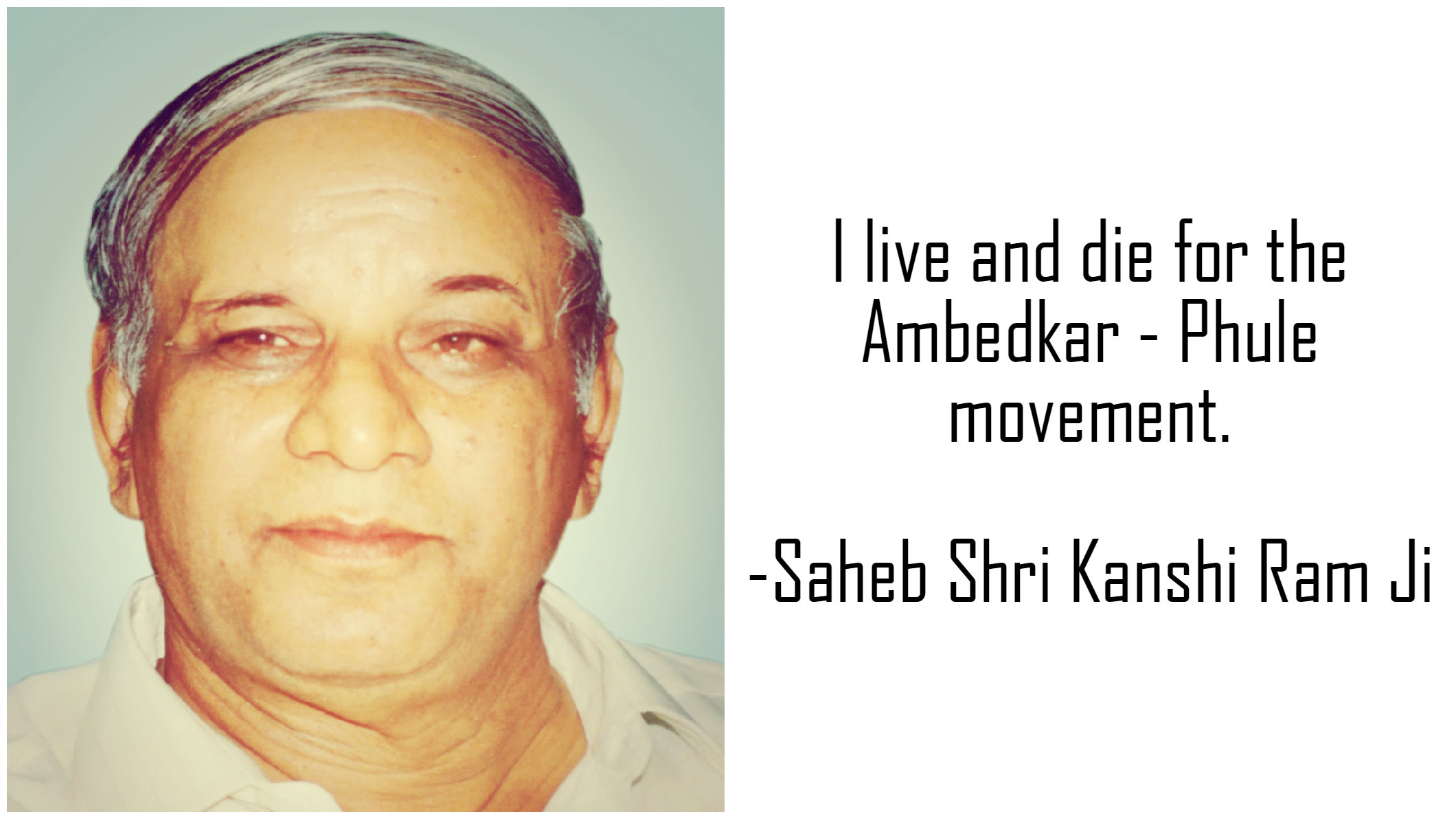
“We want permanent change” - An interview with Kanshiram
 QUESTION: Why are you so hostile to all the national parties, especially the communists?
QUESTION: Why are you so hostile to all the national parties, especially the communists?
KANSHI RAM:
To my mind, all parties represent the forces of status quo. For us,
politics is the politics of transformation. The existing parties are the
reason for the status quo. That is why there has been no upward
mobility for the backward communities. The communist parties have become
the biggest stumbling block in this regard. They keep talking about
change, but work for status quo. The BJP is better, they never talk
about change. So people never feel duped. Parties like the Congress and
communists talk about abolishing poverty, but work towards keeping
people poor. If the poor are not kept poor, these people cannot remain
in their seats.
QUESTION: At the Congress centenary, Arun Singh said your emergence was not healthy for the national ethos.
KANSHI RAM:
He is the grandson of a maharaja who never kept the interests of the
nation in mind. Nationalism to him is feudalism. NATIONALISM TO ME IS
THE MASSES OF INDIA. I BELIEVE IN THE TWO NATION THEORY: THOSE WHO
OPPRESS AND THOSE WHO ARE OPPRESSED .What does the grandson of a
wretched maharaja know about nationalism? What can we expect from Arun
Singh than such things?
QUESTION: Why is your cadre so hostile to Mahatma Gandhi?
KANSHI RAM:
Gandhi is the root of every thing. I want change. Dr. Ambedkar wanted
change. But Gandhi was the custodian of the status quo. He wanted
Shudras to remain Shudras .Gandhi worked to keep the nation divided .We
are working to unite the nation and erase all artificial divisions.
QUESTION: Why has your movement taken so much time to become a reality?
KANSHI RAM:
Upto 1971, I was not so much interested. I was working with RPI .Then I
found I was marching towards a ship that others were deserting .It took
a long time to prepare myself and others . We had to collect a lot of
information, so that we could know how to prepare society and build a
cadre. Preparing society initially took a long time. Now we are moving
at a tremendous speed. Next year when you meet me, you will ask me how
we have acquired such a speed.
QUESTION: How can you abolish caste by floating a casteist party?
KANSHI RAM: The BSP is not a casteist party. If we are uniting 6000 castes, how can you call us casteist?
QUESTION: I believe your party is off-limits to the upper castes.
KANSHI RAM:
The upper castes say why not include us. I say you are leading all the
parties. If you join our party, you will blick change here also .THE
UPPER CASTES CAN JOIN THE PARTY, BUT THEY CANNOT BE ITS LEADERS
.LEADERSHIP WILL REMAIN IN THE HANDS OF THE BACKWARD COMMUNITY. My fear
is that these upper caste people will come into our party and block the
process of change .When this fear goes, they can join our party.
QUESTION: What is your constituency?
KANSHI RAM: I REPRESENT THE CONSTITUENCIES OF BABU JAGJIVAN RAM AND CHAUDHARY CHARAN SINGH. AND MAY BE TO SOME EXTENT, SAYED SHAHABUDDIN.
QUESTION: Politicians we spoke to in Delhi say that if the BSP gets too belligerent they will finish you politically.
KANSHI RAM:
WE WILL FINISH THEM .BECAUSE IF INDIRA CAN BE FINISHED BY A CHAMAR, ARE
THESE FELLOWS GOING TO BE SAVED? WHEN WE ARE 90 PERCENT IN THE ARMED
FORCES, 70 PER CENT IN THE BSF, 50 PER CENT IN THE CRPF AND THE POLICE,
WHO CAN DO INJUSTICE TO US? A GENERAL NEEDS LESS BULLETS COMPARED TO
JAWANS .THEY MAY HAVE GENERALS BUT NO JAWANS.
QUESTION: Are you advocating an eye for an eye?
KANSHI RAM:
TWO EYES .I tell my followers Ek Eet Ka Jawab, Do Pathron Se ( you must
retaliate for one brick with two stones ) , otherwise you are not my
followers .
QUESTION: So you are propagating violence.
KANSHI RAM:
I am propagating strength. To curb violence, I must have strength
.Other than me, for instance nobody can crush the Shiv Sena. Any time I
come to Maharashtra, I will finish them .The violence of Shiv Sena will
end.
QUESTION: - How will you do that?
KANSHI RAM: -
Who are the members of the Shiv Sena who burn and destroy? They are
four castes: 1. Agari 2. Bhandari 3. Koli 4. Chamar. They are Scheduled
Castes, Scheduled Tribes and most backward communities. As soon as I
touch the Maharashtra, these people will instantly come with me.
QUESTION: - What makes you think that the BSP will not end up like the RPI? Bargaining for power with the ruling party.
KANSHI RAM:
- The RPI never bargained. It was begging. It never reached the status
of bargaining .I remember in 1971, the party struck an electoral
alliance with the Congress to contest 521 seats .The Congress contested
520 seats, the RPI contested one seat. I love the RPI, but I hate being
compared to it. It is like a cheap prostitute available at a pittance.
As long as I am alive, this will not happen to the BSP. We want change
.We don’t want alliances with the forces of status quo. If a government
cannot be formed without our co-operation, then we will have our own
conditions, for change. We want fundamental and structural changes, not
cosmetic ones.
QUESTION: - There are rumours that you met Hazi Mastan Mirza at Gonda last November to solicit funds.
KANSHI RAM:
- I have never met him anywhere. I have only seen his photograph .He
may be paying other people, but not us. In fact he is being used against
us. If anybody can prove that I have ever met him, I am prepared to
face the highest punishment .Moreover, how much money Hazi Mastan can
have? He is a very small man compared to me, as far as funds are
concerned. If I only have funds like Hazi Mastan, how can I beat the
Congress and other parties? How many crores can he give us?
QUESTION: - THERE IS SOME MYSTREY ABOUT THE SOURCES OF YOUR FUNDS.
KANSHI RAM:
- My funds come from various sources which will not dry up. My funds
come from those people who produce wealth. The Bahujan Samaj produces
wealth. I get my money from them. Lakhs of my people spend crores going
to festivals like the Kumbh Mela to improve their next birth. I tell
them that Kanshi Ram does not know anything about the next life. But he
is an expert in the present life.
Those
interested in improving their next life , I tell them , must go to the
Brahmins on the banks of the Ganga .Those interested in improving their
present life must come to me . So they throng to my meetings.
QUESTION: - There is talk of your being sponsored by the CIA.
KANSHI RAM:
- For so many years this government has been clapping about it. It
distributed lakhs of pamphlets about this in Bijnore. But the result was
that people became furious and could not be purchased. Babu Ji tried
to purchase votes at Rs. 1000 each .But even those who used to be
purchased at Rs.10 turned him down. And if I am a CIA man, why hasn’t
this government taken any action against me? That shows it is a hijra
(eunuch) government.
QUESTION: - They say you spent a lot of money on the Lucknow rally.
KANSHI RAM:
-Rs. 22 lakhs were spent on hiring the buses alone .But I am angry. It
should have been Rs. 22 crores .A time will come when people should
spend Rs. 22 crores on my call .I don’t feel any dearth of money. If
money is coming from a treasury, it will be extinguished. I am getting
money from a perennial source of funds. I need only one crore rupees to
win all the 542 parliamentary seats. One day, voters will queue up to
pay money to Kanshi Ram. The next day, they will que up to vote for
Kanshi Ram.
QUESTION: - Some of your party men have broken away from you.
KANSHI RAM:
- You cannot keep all the people together. Some people may get tired.
Some people may be purchased. Some may become frightened. This will be a
permanent feature. It will not demoralise us. I have created a method
where in a given time if 10 people go away , we will produce 110 people
of the same caliber .Whom we dropped as deadwood , others are trying to
pick up and burn a fire .They are trying to use them against us.
QUESTION: - You reiterate that you have never taken funds from a foreign source.
KANSHI RAM:
- When I went to England two years ago, some people - there are seven
lakh Chamars there - offered me funds. I decided not to take the money,
though Indira Gandhi, Rajiv Gandhi and Buta Singh had taken money from
the same source - the Guru Ravidass Gurdwara in Birmingham. They had
given to Babu Ji also .I was the only person who didn’t accept.
QUESTION: - What Kind of change are you looking for?
KANSHI RAM:
- I don’t want temporary changes. I am not prepared to attain what I
cannot sustain .Let us attain whatever we can, but it must be retained
and retained only by permanent change.
QUESTION: - And when do you intend to contest elections?
KANSHI RAM: - I will stand when there are 100 constituencies in India where I can get a walk over.
QUESTION: - How long will that take?
KANSHI RAM: - Two years at the most.
http://archive.indianexpress.
Congress is Enemy No. 1, says Maya
Lucknow The BSP faces its biggest threat from the Congress,
party chief and Uttar Pradesh Chief Minister Mayawati said on Monday
while addressing a huge rally of party workers here to mark the BSP’s
silver jubilee and the birth anniversary of party founder Kanshiram.
Accusing
the Congress of trying tricks to harm her party, Mayawati said she
would not let down the Dalits. “SC/ST samaj ka seer niche nahin hone
dungi kisi kimat par ( I won’t let down the SC/ST community at any
cost),” she said.
She
narrated the conditions in which the BSP was formed by the Kanshiram
in 1984. “In the beginning days, the Congress had tried to project
Kanshiram as an agent of the CIA,” she told the gathering. The Congress
had tried to create an impression that Kanshiram used to manage fund
to run his party from outside. But this could not stop the workers from
donating fund to run the party, she added.
The
BSP chief also made a comparison between her party’s progress and the
first 25 years of the Congress. “The BSP has a glorious history in the
first 25 years in comparison to that of the Congress party’s primary
stage,” she said. She said although several of its leaders left, her
party continues to make progress.
Terming
the Congress as anti-SC/ST, she said this was proved by the failure of
the UPA-1 government to declare national mourning even for a single
day after the death of Kanshiram in 2006. “This is an example of the
Congress’s anti-Dalit attitude,” she added.
She
also described the Women’s Reservation Bill as an anti-SC/ST move of
the Congress. She said her party would hold a demonstration against the
Bill on October 14.
The
Chief Minister also criticised the opposition parties, particularly
the Congress, for raising questions over the construction of memorials
and parks in the honour of SC/ST and backward community personalities.
Referring
to her own statues in parks and memorials, she said: “Is there any law
that stops the construction of anyone’s statue in his or her
lifetime?”
She
said the construction of statutes of elephants has nothing to do with
her party’s election symbol. Stating that her government has
distributed bicycles under the Savitri Bai Phule Schemes, she said,
“So, the symbol of the SP should be banned.”
Similarly,
she said people waving hands is common so the Congress should also be
prohibited from using hand as it election symbol.
In
her speech, Mayawati also spoke about the party’s growth over the
years and announced that party general secretary Satish Chandra Mishra,
considered the architect of the BSP’s Dalit-Brahmin social
engineering, would now head the party’s legal cell. Mishra would not
attend political programmes of the party at the cost of legal matters,
she said.
https://drambedkarbooks.files.
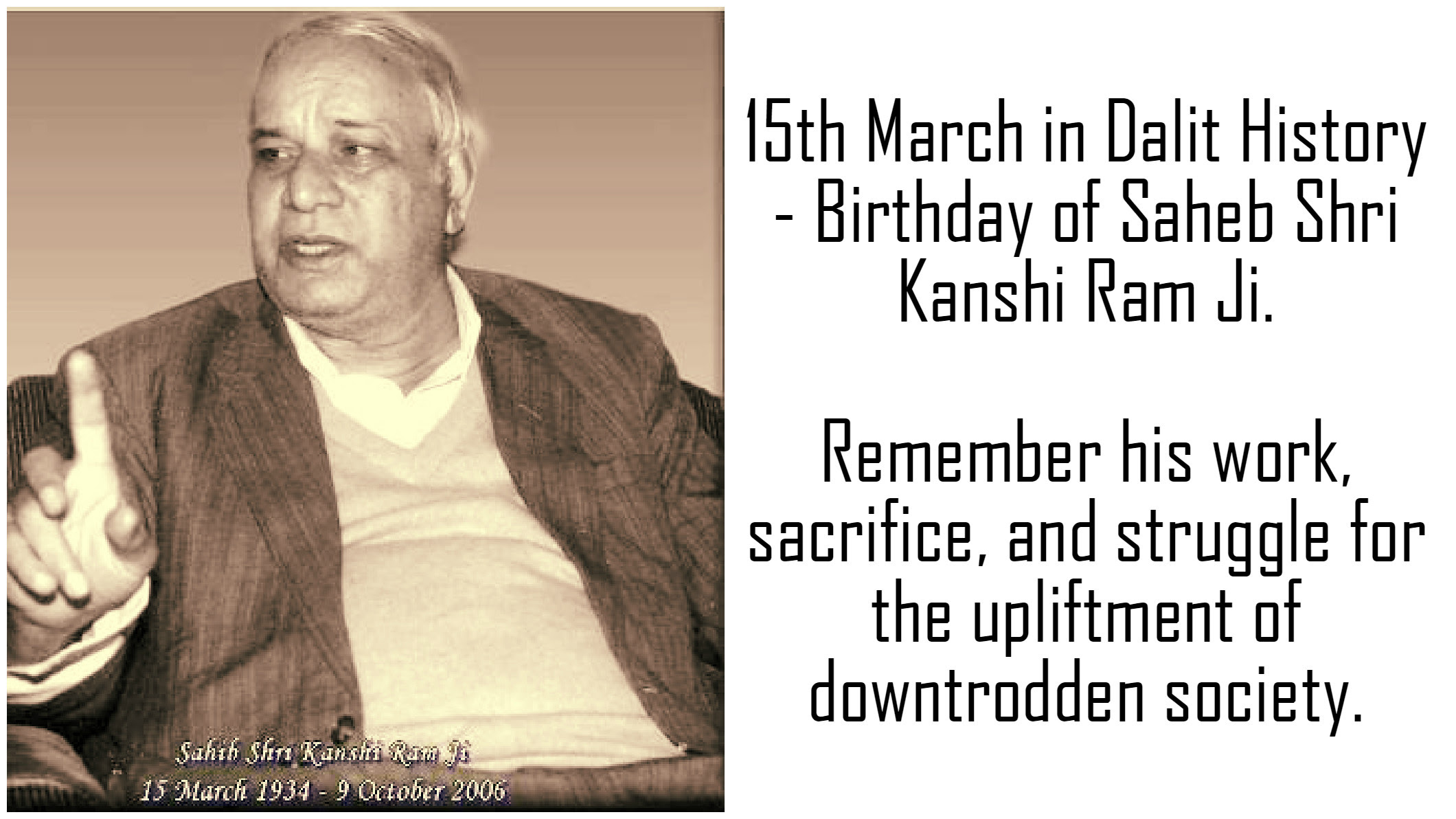
BSP celebrated its silver jubilee on Kanshiram’s b’day
Uttar Pradesh Chief Minister Mayawati on Monday said the BSP would
celebrate 25th anniversary of its foundation on the birth anniversary of
its founder Kanshiram on March 15.”The party, which came into existence
on April 14, 1984 completed 25 years last year, but the party could not
celebrate silver jubilee due to Lok Sabha and assembly elections in
some states,” Mayawati told reporters here.
She said now the party has decided to celebrate its 25th foundation day
on the birth anniversary of BSP founder Kanshiram on March 15 in
Lucknow. “As part of its silver jubilee celebration the party will also
organise a massive national rally in the state capital at Ramabai ground
on the same day,” she said. During the rally, two special bulletins on
the party and its founder Kanshiram would also be released, Mayawati
said.
“A film depicting life struggle of Kanshiramji would be screened so
that the party workers should take inspiration and complete his
unfulfilled work,” she said.
Attacking the Congress, the chief
minister alleged that the party which ruled the country and states for
several years did nothing for the upliftment of the downtrodden,
backwards, and religious minorities.
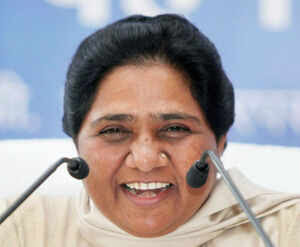
Mayawati has sought division of Uttar Pradesh into 4 states.
Nation is Elephant
 of BSP!
People are just fed up with Congress, other regional parties and BJP!
of BSP!
People are just fed up with Congress, other regional parties and BJP!capture the MASTER KEY !

Politics is the most difficult of life skills, and those who remain reluctant to
master this art are condemned to remain as obedient slaves while the
masters of politics enjoy undiminished supremacy in all human relations.
History bears testimony that civilization developments have been made
possible by the leadership of the political genius and by the labor of
the politically ignorant. Indian history stands out as a glaring example
of the dominance politically conscious groups’ exercise over
non-political masses. The perfect political consciousness would never
allow its victims to realize their subjugation lest they attempt
upheavals and transformation. Whatever hardships and misery one has to
go through, as a result of being non-political, is projected as the
outcome and consequences of some supernatural, natural incidence in the
past, as misdeeds in past births or due to low levels of competency,
caliber and capabilities in the present and is translated as duty of the
enslaved.
A glance at the pathetic perpetuation of the untouchables’ slavery and its
institutional manifestations for centuries together in the form of
poverty, denial of human rights, unemployment, illiteracy, self
abnegation etc. demonstrate total hegemony of the caste beneficiaries
and lack of political consciousness amongst the caste victims. The
consciousness of maintaining domination over others remains the basic
instinct of a political group and the efficient use of this
consciousness to meet certain purposes shall measure its correctness.
A group bereft of political correctness or moral righteousness uses power in a
selfish and imperious manner and puts humanity to shame as demonstrated
by the brahmanical propensities in India. In the process, the
hegemonized masses of untouchables and touchable Bahujan have to
perpetually fight to retain/regain self-esteem, dignity and self-respect
as they are forced to languish in the most dehumanized abject
conditions. With no dreams of liberation in their sight, the caste
victims stay resigned to their ‘divine destiny’ as destitute, degraded
and disparaged, from time immemorial subjected to the choicest of
insults, ignominy and humiliations accompanied by physical hardships and
discomfitures of bonded slavery.
 http://www.ambedkartimes.com/
http://www.ambedkartimes.com/
The struggle against the ‘cold blooded and calculated poverty’ of political
consciousness remains inconclusive historically. Most of the attempts to
politicize the oppression in the Indian subcontinent could never be
brought to its logical culmination of emancipation, empowerment and
enlightenment. The annihilation of obscurantist primordial liabilities
and superimposed disabilities remains distant. As a result, casteism
thrived on the shoulders of its very opponents and those who initiated
the process of dismantling the caste structures ended up upholding the
caste hierarchies more diligently with greater aggression and vigor.
Caste shamelessly accommodated its erstwhile opponents to the ever
bourgeoning ‘Shudras turned practical others’ through the process of
Brahminisation or Sanskritization. But this process of settling down at
the lowest rung of caste stratification had never been accepted by the
untouchables unlike the Shudras and therefore the Dalits remained the
agents of principal contradiction with the powers that be. Besides,
being outside the cultural contours and control of the brahamanics, the
untouchables or Dalits, possess the inherent quality and hunger to be
the harbingers of transformation of social relations, to infuse an
egalitarian and saner ethos into society, if they choose an appropriate
strategic trajectory.
For being most oppressed, and therefore most needful and hence most desirous
of smashing the caste hierarchies, the untouchables are the natural
leaders of this struggle of social transformation. The very use of the
phrase ‘annihilation of caste’ by Dr. Ambedkar speaks volumes of this
revolutionary appetite; the untouchables have and assumed enormous
ideological and political significance in contrast to the mild
terminology used by so-called caste reformers.
 http://cms.outlookindia.com/
http://cms.outlookindia.com/
In such an undemocratic and oppressive soil, the sowing of seeds of democratic
institutions was the most challenging task performed by the makers of
the constitution. To the satisfaction of non-political masses it was
difficult to realize the enormous potential of this seed by the
short-sighted myopic living conditions they were subjected to at that
point of time. Being socially oppressed, economically exploited,
culturally excluded and politically subjugated they had no idea of what a
mighty tree this seed would transform itself into in the future.
As Ambedkar once observed: “Men are mortal, so are ideas. An idea needs
propagation as much as a plant needs watering. Otherwise both will
wither and die.” The idea of democracy or politicization of masses does
not suit the ruling castes and they do their best to stop the trickling
down of political consciousness right to the grassroots. With all the
socio-economic and culture-religious power at their disposal, the
tyrannical brahmanical minority did their best to successfully obstruct
democracy for the masses for four decades at least. How procedural has
been the democracy, to use the Schumpeterian term can be gauged by the
fact that in 2012 government had to accept the necessity of right to
food for 2/3rd population after conceding that 77% of Indian population
is starving at below Rs. 20 a day. With less than 50% population denied
safe drinking water and ¾ deprived of hygienic sanitation facilities,
rampant illiteracy and unemployment, the historical responsibility of
extricating the masses from the yoke of political ignorance remains
largely with the politically conscious Bahujan communities.
The dawn of Bahujan Samaj Party on the horizon of the political arena in 1984,
with Kanshi Ram at the helm of affairs, changed the canvas of the body
politic of the country, bringing in hitherto unconventional and somewhat
unbelievable grammar of politics with fresh idioms and terminology.
‘Our ultimate aim is to rule India’ thundered Kanshi Ram, who became a
phenomenon within no time. Coming from a community of politically
indifferent people, Kanshi Ram set afire the imagination of the
untouchables who could suddenly visualize an objective alternative to
their purposeless wanderings over which Gandhian, Marxian and
brahamanics claimed perpetual ownership. The Chamars, supposedly one of
the most recalcitrant of the untouchables, were the first to own the
historical responsibility of bringing justice to the masses and
legitimacy to democracy that was highly content deficit.
Soon a secret was unearthed by the educated elites and the intelligentsia that
the call given by Kanshi Ram to capture the political power was nothing
new and Ambedkar had already advised Dalits to write on the walls of
their homes that they have to be the ruling community of this country
one day. But Ambedkarite literature remained inaccessible even to the
educated ones not to mention the uneducated ones. But the uneducated
ones proved themselves to be great learners and captured the zest of the
matter unmistakably. The rural masses of Dalits, with no food in their
bellies began to queue up behind the elephant, the election symbol of
BSP, which was used by Dr. Ambedkar also for political mobilisation and
consolidation. These supporters had great hunger and unquenchable
appetite in their eyes for self-respect, dignity and empowerment. With
pristine emphasis on ‘own ideology, own leadership and own organisation’
Kanshi Ram instilled self confidence in the enthusiastic new political
recruits taking great moral postures on contemporary political issues
and confronting the most powerful personalities like VP Singh and Rajiv
Gandhi. These symbolic fights were great moral boosters with unique
mobilisation strategies. The much needed initiation was performed and
the neediest started learning and using the political means for their
liberation with the agenda of social transformation and economic
emancipation.
 http://www.images22.com/pics/
http://www.images22.com/pics/
As a master strategist Kanshi Ram used mammoth rallies as a ‘confidence
building mechanism’ for a community that was scattered, resource-less
and heavily dependent on dominant castes for its every day survival at
micro level in the village setting. Being part of these rallies attended
by millions or more provided him a great feeling of belongingness and
superior strength, convincing him that there were so many like him and
he was not alone. It was a great empowering strategy executed with
meticulous perfection and alacrity. Also Kanshi Ram dissuaded local
cadres not to contest PRI elections lest they may have to confront the
dominant power at the village level with no weapons i.e. education,
wealth, arms and local organisations, running the risk of
demoralisation. Also these elections are used as a ploy to demoralise
the most powerful untouchable community by propping up political stooges
from numerically insignificant untouchable groups completing the evil
design of Poona Pact at the village level.
In the initial years of the BSP, Kanshi Ram at the beginning of his address,
used to advise ‘political others, the opponent Manuwadis’ to leave the
rally ground for they might not like some of his observations and more
since he was interested in a self respect movement, in building a
Bahujan Samaj with its own strength and support, and therefore there was
no need for their support. It was plain thinking and even plainer
talking. Some of the people did leave the meetings and he used to
address them for hours together, the audience mesmerised, listening in
pin drop silence with total concentration. What an impact it had on an
historically excluded community which was used to everyday abuse and
humiliation, scolded and booted out from every possible position and
premises of prominence!
They were witnessing nothing short of a miracle happening in front of their
eyes: at least one of them was so powerful and mighty that he could
command the commanders, he could ask them to leave the hall, so far only
they were asked to leave or not to enter but now the process had
started to reverse, they could expect better things and larger things to
happen. It worked as a great morale booster in the on-going
psychological warfare, as at the ground and material level, conditions
were otherwise utterly hostile. It was another master stroke with which
Kanshi Ram prepared his cadre of highest conviction, unflinching
commitment and stunning courage. The political seed of emancipation and
empowerment started getting the right fertilizer, light and water. The
journey for reclaiming the fullest humane personality began in right
earnest discarding the politics of dependency and demoralisation. Kanshi
Ram emerged as the symbol of articulation, assertion and emancipation
for the historically despised humanity. The politics of North India was
never to remain the same again. The Dalits declared their arrival as
conscious, capable catalysts of change and transformation of Indian
politics and consequently socio-cultural structures, with democratic
élan. The next two decades witnessed intense politicisation of eager
masses that were determined to change: ‘Vote Hamara, Raj Tumahra, Nahi Chalega‘ to ‘Vote Se Lenge CM PM, Aarakshan Se SP DM‘.

By the process of awakening the masses and inducing them into meaningful
involvement in the democratic process, Kanshi Ram was able to convince
the Dalits, Backwards and converted religious Minorities, whom he
collectively called as Bahujans, that political power has great
transformative potential and was a great facilitator for destroying
socio economic inequalities. The right to vote is the most precious
possession of the Bahujan Samaj and they must exercise it with utmost
efficiency to bring the desired political change. As all other resources
i.e. education, wealth and power are not in their favour they must
realise the significance of vote as their numerical preponderance was
decisive in the majority driven democratic system. The very name
‘Bahujan Samaj Party’ of the organisation was a marvel of socio-cultural
philosophy and political stewardship. The idea of Bahujan explains the
origin, status and objectives of the party. Not only does Bahujan
signify the philosophy, perspective and programme but positively sets
the agenda for the mission as it is widely called, in the form of ‘Jati Todo Samaj Jodo‘.
Graded inequality with hierarchic and hostile castes as warring factions have
remained the backbone of brahamanical supremacy as the Bahujan Samaj was
divided into more than 6700 subgroups. Kanshi Ram called them as caste
victims and on the basis of collective victimhood started mobilising
them, providing alternative notions of identity, history and culture of
India, extensively using Buddha, Phule, Periyar, Ambedkar and many more
social revolutionaries who fought for change and self-respect of the
Bahujan Samaj. In contrast to the brahamanical traditions of keeping the
masses in the dark and utter ignorance, this mobilisation was enabling,
empowering and enlightening the Bahujans and specially the neediest
ones desirous of change and transformation in its initial years.
Kanshi Ram made a feverish pitch to be an honest claimant to represent the
constituency of both Chaudhry Charan Singh and Jagjivan Ram and up to
some extent Abdulla Bukhari. It was nothing less than a political coup
in the Indian subcontinent and brought caste and its related debate to
the fore and changed the agenda for Indian politics. The Bahujans were
unleashed from their great political slumber and hibernation and having
been being there for centuries together had developed an enormous
appetite for reclaiming their lost glory and positions. The great
democratic principle of power to the people starting taking its toll on
the hegemonic caste status quo and the participation and representation
of Bahujan started assuming substantial proportions.
 https://drambedkarbooks.com/
https://drambedkarbooks.com/
The Lok Sabha accounting for less than ten Other Backward Classes members in
early 80’s was made substantively representative to the tune of 200
members coming from this huge group constituting half of the India’s
population. As a hard core democrat, having complete faith in the
efficacy of constitutional means for the salvation of the innocuous
masses, Kanshi Ram infused great enthusiasm and versatility into
otherwise pale and procedural democracy in the hands of chitpawan brahamanical
tyrant minority. The faith poised by the caste victims in the Indian
constitution and political democracy paved way for the widening and
enrichment of democratic élan of the system suffering from the caste
disease. One of the political novelties introduced by Kanshi Ram was the
declaration of ‘Indian constitution as election manifesto’. Till date
the BSP does not bring out an election manifesto and swears by the
constitution alone. Kanshi Ram by bringing in masses as real actors
provided grassroots support system dismantling the core, mantle and
crust of the essentially undemocratic society. Rightly, Kanshi Ram
earned the reputation of ‘greatest social democrat’ of modern times.
https://en.wikipedia.org/wiki/
Handling caste in politics largely remained the exclusive preserve of the caste
Hindus in the post-47 era, paying great political dividends to the
hegemonic control of the chitpavan Brahmanics. Kanshi Ram successfully used caste
to the benefit of the caste victims, as an effective and powerful tool
of consolidation and mobilisation of the Bahujan majority. Those
enjoying the fruits of casteism for centuries started feeling the heat
of their own creation and started crying ill about caste in politics.
Caste victims having realised the importance of democratic polity and
their numerical advantage, initiated the process of correcting the
historical imbalance putting the wheel of democracy on the tracks and in
this way bringing power back to the people. This was a great move
towards extricating the caste victims from socio-political dependence,
realising their humane potential for empowering enlightenment. This
process of Bahujan empowerment restores the dignity and self-respect of
the great masses kept politically enslaved by the brahamanical
conspiracy. The actualization of their democratic propensities with
critical faculties set in motion the questioning of their ‘divine
dependence’– the Bahujan declared their resolution for restoring the
great Buddhist philosophy of rational egalitarianism as ‘Atto-deep-Bhave‘, self-
https://en.wikipedia.org/wiki/
The movement started by Kanshi Ram gave enormous grassroots fillip to the
Buddhist socio-cultural proliferation in the country. Each Bahujan cadre
is the embodiment of liberating consciousness and exemplary courageous
convictions determined to mend vicious minds and constructing
compassionate humane relations. Liberating Bahujan Samaj from the
self-abnegatory mental bondage and by creating perennial training
channels of innumerable insurmountable ’self-motivated-activated’ human
resources, Kanshi Ram unleashed the great humanity into meaningful
action, fast leading the path to emancipation, empowerment and
enlightenment. It is appropriate, for his unprecedented contribution to
the cause of humanity and civilizational development, for him to be
acknowledged as greatest contemporary Buddhist or modern Buddha.

As an epitome of sacrifice, struggle and success, Kanshi Ram established
unparalleled standards for the liberative Bahujan movement in modern
India. His is a simple example of how a single individual can make his
mark on his times and be instrumental in changing the course of history.
Indian democracy suffering from the chitpawan brahmanical virus lacked legitimacy
and credibility for almost four decades. Kanshi Ram brought the masters
of democracy, the masses into action and made them the real,
substantial actors doing away with the democratic deficit. With highest
conviction, unflinching commitment, ruthless dedication and meticulous
executions with absolute focused approach, Kanshi Ram created phenomenal
results in transforming SC/STs into dynamic and diligent future rulers
of the country abandoning their docile, diffident, dependency, by
declaring that ‘our ultimate aim is to rule India‘.

All-paper vote is still the most reliable and safe
procedure. Even the paper+scanning machine is dubiously useful. It is
more costly than simple paper, and if you want to check that the machine
counted right you still have to review the ballots by hand (with all
the problems that this might create when the ballot were originally
designed for being machine-readable, witness Florida 2000).
That some
voters are illiterate does not say anything in favour of e-voting, on
the one hand they still have to be able to read on the screen, on the
other hand there is no need at all to have a system that requires people
writing full names of parties and candidates. Pre-printed paper ballots
where the voter only have to mark an X are the way to go. Much simpler
and much safer than e-voting, and just as illiterate friendly as it can
be.
http://votingmachines.procon.
How to Vote on an Electronic Voting Machine
|
The majority of electronic voting machines in use are manufactured by four companies: Premier Election Solutions (formerly known as Diebold Election Systems), Election Systems and Software (ES&S), Hart InterCivic, and Sequoia Voting Systems. Most DRE (direct recording electronic) voting machines are touch Below is a step-by-step guide to using a popular model of |
| I. | Premier/Diebold AccuVote TS |
| II. | Election Systems and Software (ES&S) iVotronic |
| III. | Hart InterCivic eSlate |
| IV. | Sequoia AVC Edge |
| The Accuvote TS is a touchscreen DRE (direct recording electronic) voting machine with VVPAT (voter-verified paper audit trail) capability. In the 2012 elections, the Accuvote TS was used statewide in four states (AL, GA, MD, and UT) and in some jurisdictions in 18 states (AZ, CA, CO, FL, IL, IN, KS, KY, MS, MO, OH, PA, TN, TX, VA, WA, WI, and WY). |
|||||

Diebold AccuVote TS Operators Manual (PDF) 1.1 MB
|
 |
||||
| 3a. Select Candidates or Issues OR Select Write-In if Desired Touch the box on the screen next to your choice. An “X” will appear, designating your selection. To change or cancel your selection, touch the box again and make another selection. If there are write-in candidates for whom you wish to vote, select “Write-In” and a keyboard will appear on the screen. |
![]()

| 3b. Select Write-In Candidate Separately type the name of each person you want to write-in, then select “Record Write-In.” The normal voting screen will return and the name you entered will appear as the choice for that particular race. touch “Back” to review previous pages. |
![]()

| 4. Review Your Ballot On the Summary Page review your choices. Items in red are races that were left fully blank or not fully voted. If you want to vote for a race that was left blank or not fully voted, or change your vote for any race, just touch that race on the screen and you will be taken back to the proper page to make or change your selection. |
![]()

| 5. Print Ballot for Verification If the AccuVote is fitted with a voter-verified paper audit trail, touch “Print Ballot” and you will see an enclosed printed copy of your choices to the right of the machine. After reviewing the ballot printout, you can either cast or reject your ballot. |
![]()

| 6. Cast the Ballot Touch “Cast Ballot” when you are ready to record your vote. Once your ballot has been cast, the printer will scroll to hide your selections. |
![]()

| 7. Finish: Remove Card You have completed the electronic touch screen voting process. Remove your voter access card and return it to a poll worker. |
![]()

Sources: California Secretary of State Office ![]() and Diebold Election Systems
and Diebold Election Systems ![]()
| The ES&S iVotronic is a DRE machine with a touch screen interface and VVPAT capability. In the 2012 elections, the iVotronic was used statewide in SC and in some districts in 17 states and DC (AR, CO, FL, IN, KS, KY, MO, MS, NC, NJ, OH, PA, TN, TX, VA, WV, and WI). |
||||||

ES&S iVotronic Operators Manual (PDF) 4.5 MB
|
 |
| 3. Review Ballot After completing last ballot page, touch “review” and carefully review the selection review screen. To change or make a new choice, touch the box next to candidate or office name, and then touch box next to new selection. |
![]()

4.  When finished, press the flashing red “vote” button to cast your ballot. “Thank You For Voting” screen means you have properly cast your ballot. |
![]()

Source: Election Systems and Software ![]()
| The eSlate voting machine is a DRE machine with a select wheel, push button interface, and VVPAT capability. In the 2012 elections, the Hart eSlate was used statewide in Hawaii and in some jurisdictions in 11 states (CA, CO, IL, IN, KY, OH, PA, TN, TX, and WA). |
||||||

Hart InterCivic eSlate Operators Manual (PDF) 468 KB
|
 |
|||||
| 3. Making Ballot Choices The ballot then appears on the color screen and the voter uses the SELECT wheel to move a blue highlight bar through the ballot. Once the voter moves the highlight bar onto their desired choice, they simply press the large button marked ENTER and the selection is marked. The box beside that choice is marked in red and the voter’s selection becomes bold while all of the other choices fade into the background so the voter has a strong visual signal of their vote. |
![]()

| 4. Reviewing the Ballot Choices After the voter has voted in the last contest on the ballot, a Ballot Summary screen will appear listing all the choices made and lets the voter know if they have missed voting in any race. If the voter makes a mistake or changes their mind they can make corrections from the Ballot Summary screen. |
![]()

| 5. Final Cast Ballot After reviewing and confirming the Ballot Summary screen, the voter can press the CAST BALLOT to finish voting. The screen informs the voter that they cannot go back after CAST BALLOT has been pressed. Voters will know they have finished voting when they see the waving American flag or hear “Your vote has been recorded” on the audio headset. |
![]()

Sources: San Mateo County Elections Office ![]() and Hart InterCivic
and Hart InterCivic ![]()
| The Sequoia AVC Edge is a DRE touch screen machine with multilingual and VVPAT capability. In the 2012 election, the AVC Edge was used statewide in Nevada and in some jurisdictions in 11 states (AZ, CA, CO, FL, IL, MS, NJ, PA, VA, WA, and WI). |
||||||

Sequoia AVC Edge Operators Manual (PDF) 171 KB
|
 |
|||||
| 3. Verify and Print After marking your ballot, a review screen allows you to see all of your selections. To make a change, touch the box you would like to revise and you will be returned to the corresponding page of the ballot. If the machine is fitted with a voter-verified paper audit trail, you will be asked to print and review a paper record of your ballot. The paper record will appear in the window on the left of the screen. |
![]()

| 4. Cast Ballot After verifying the paper record, you may either touch the “Make Changes” or “Ballot” button on the screen. If you choose to make changes, a new paper record incorporating your revisions will be printed. When you select “Cast Ballot,” the printer will indicate the paper record was accepted by the voter. The paper and electronic record will remain securely stored inside the machine. |
![]()

You will get this
